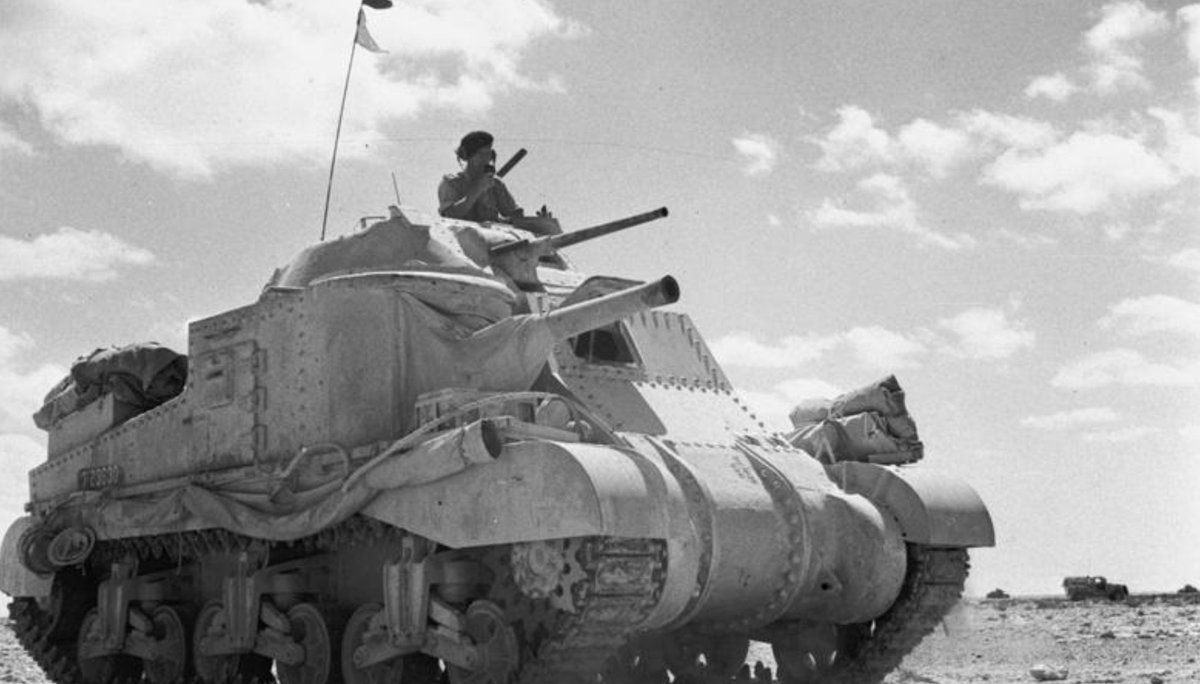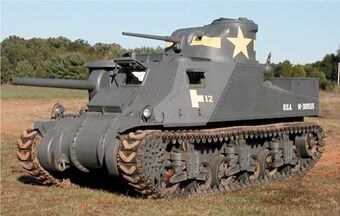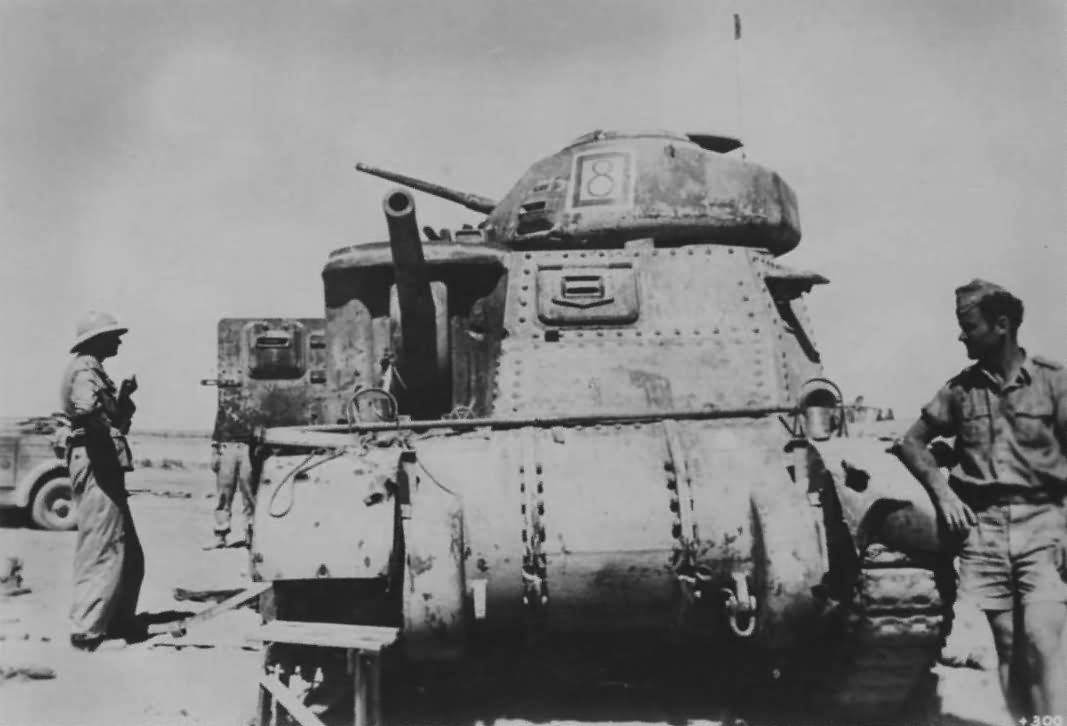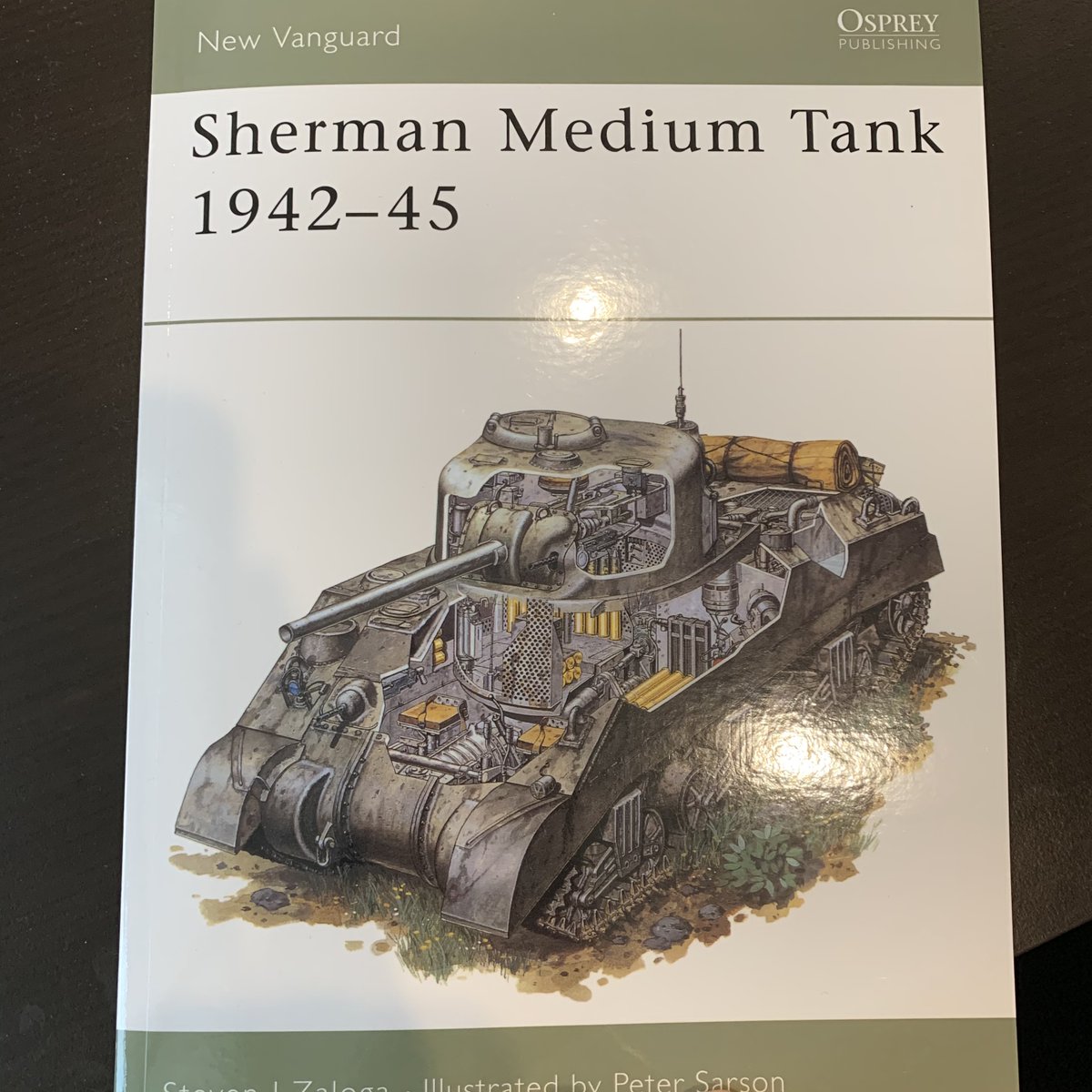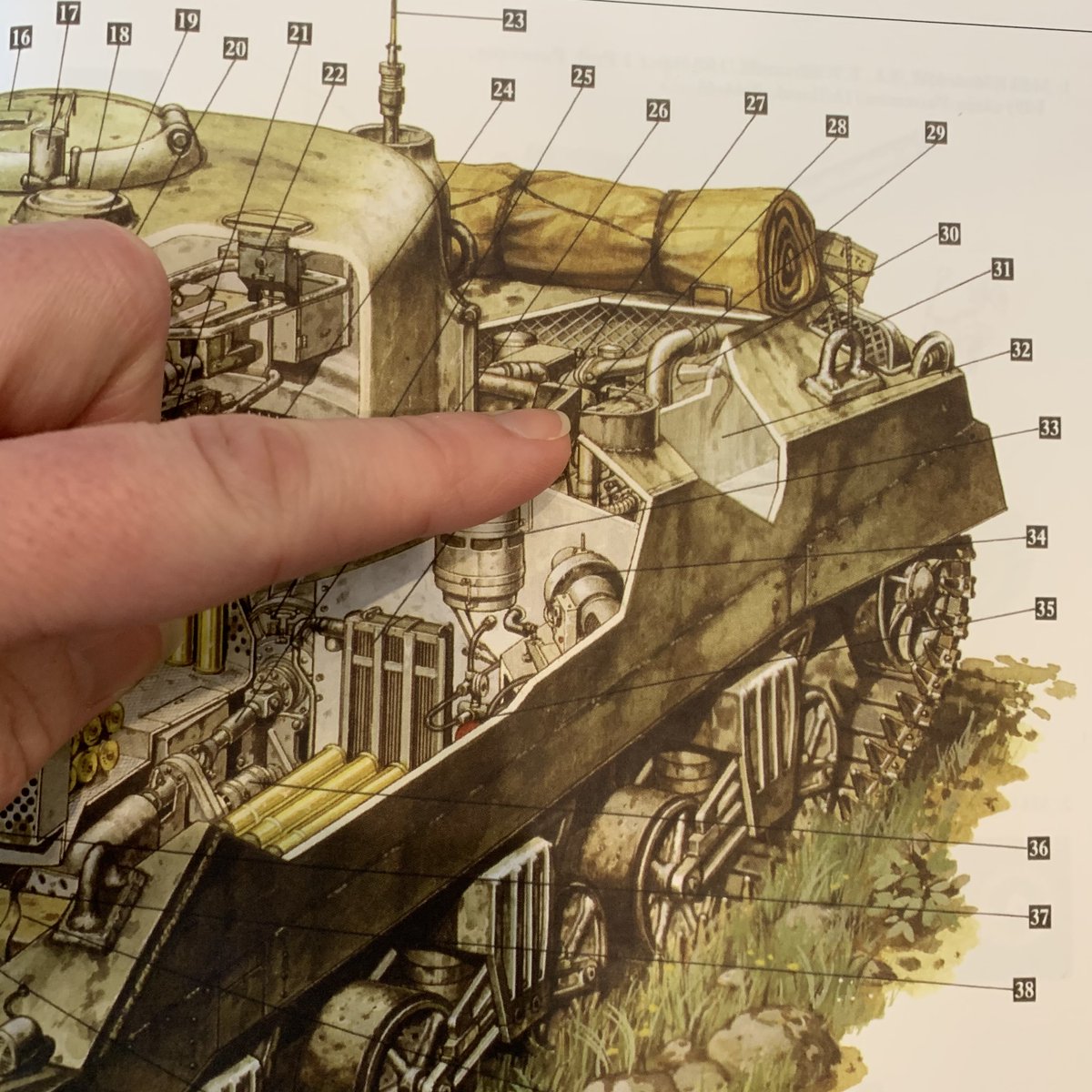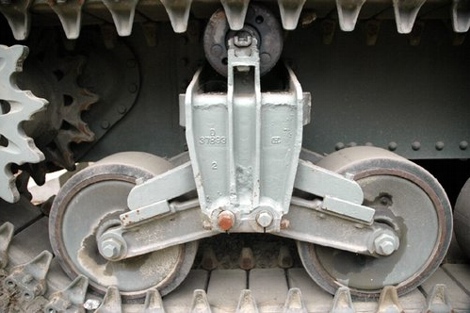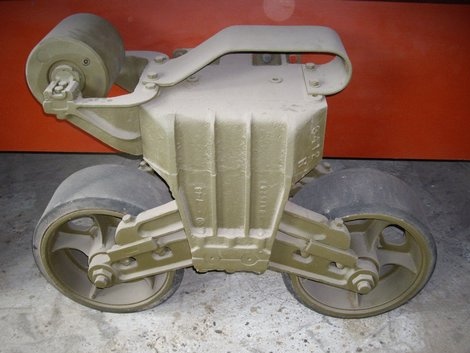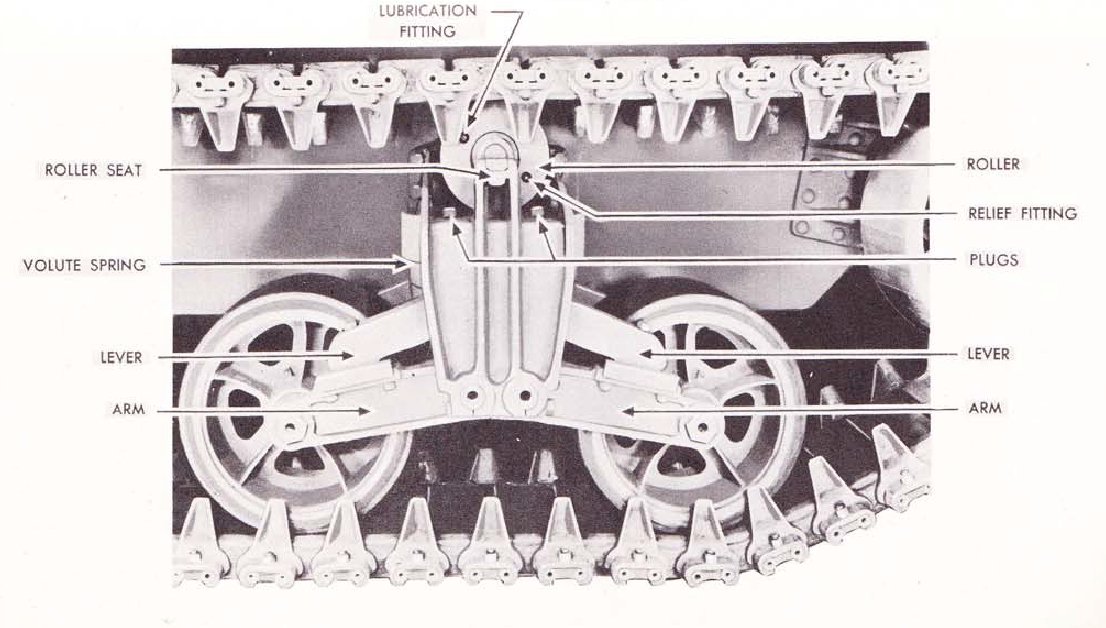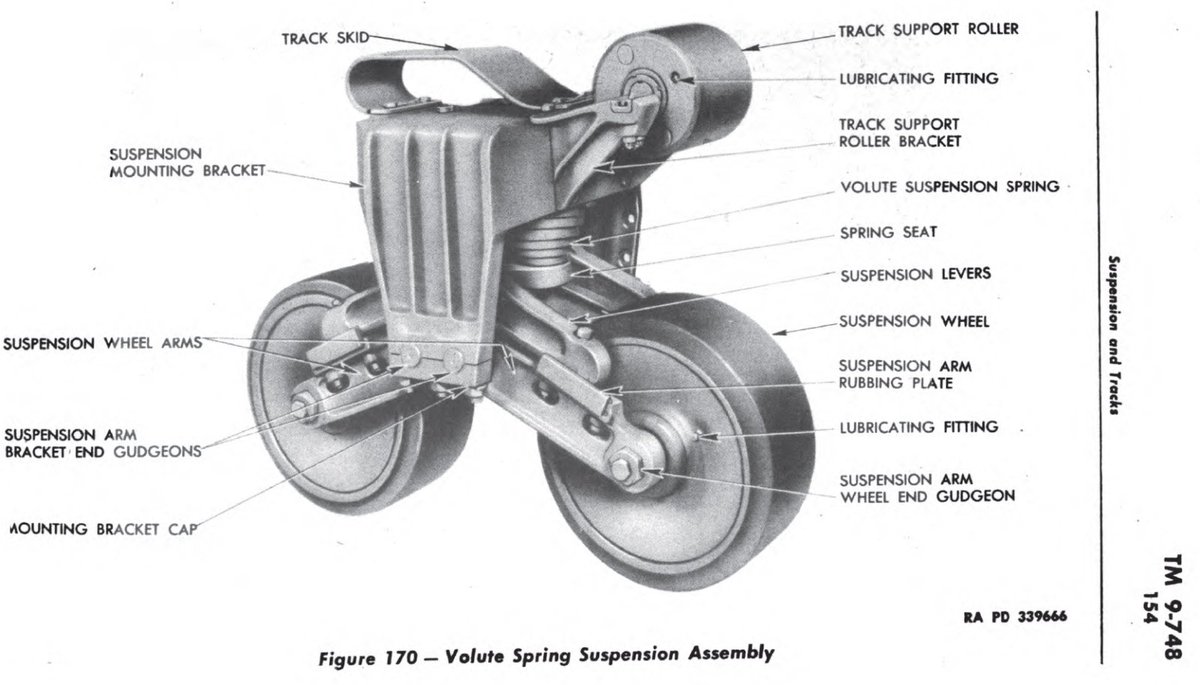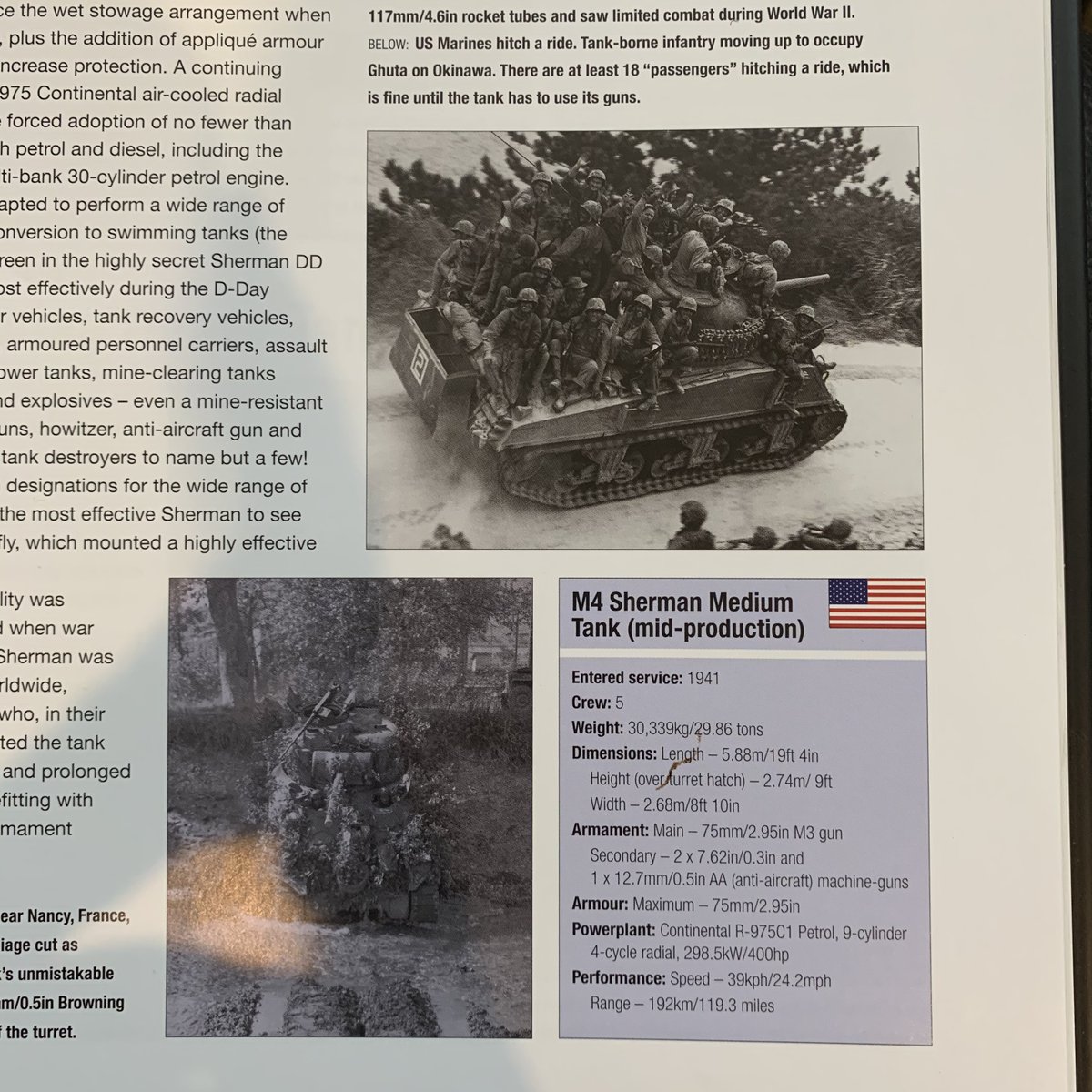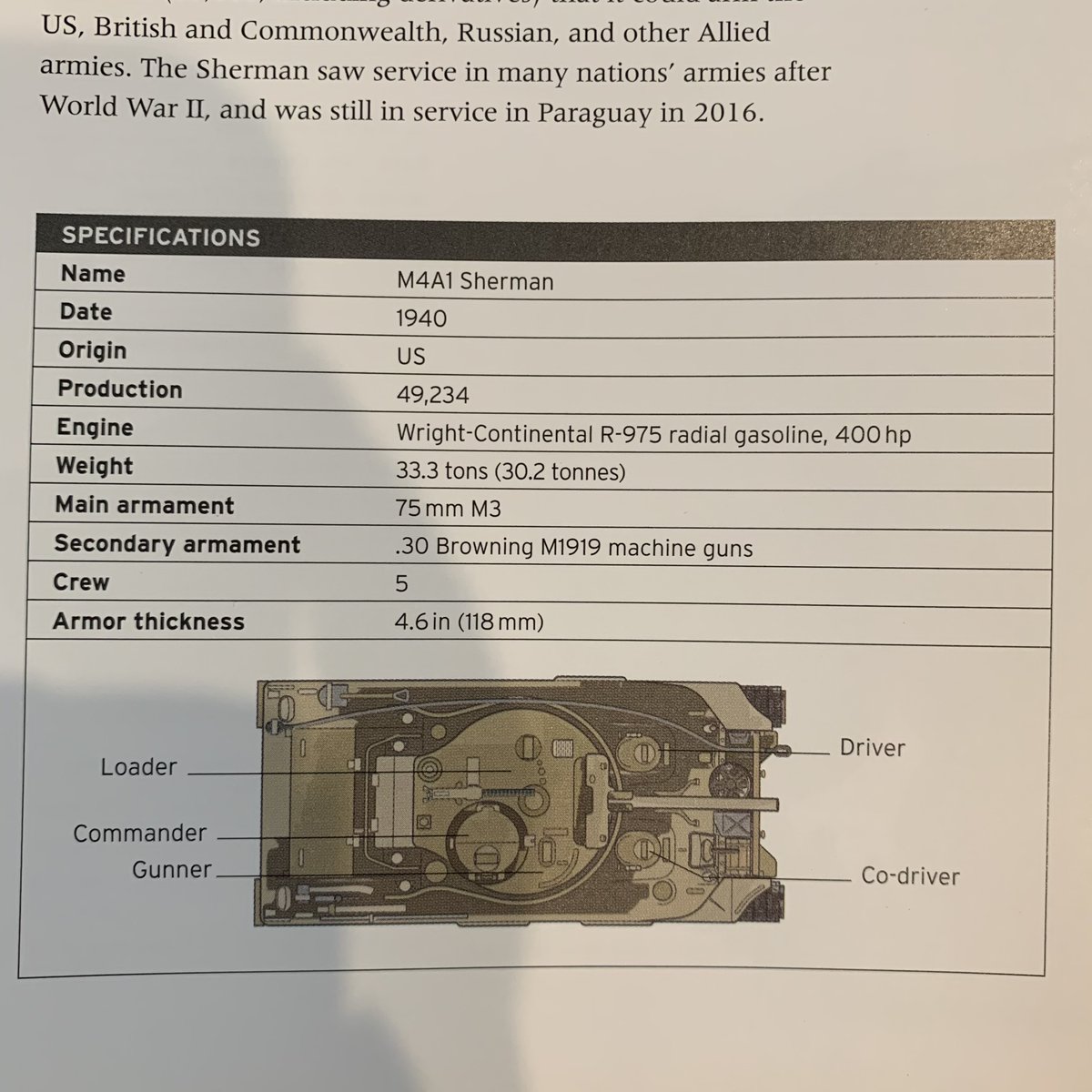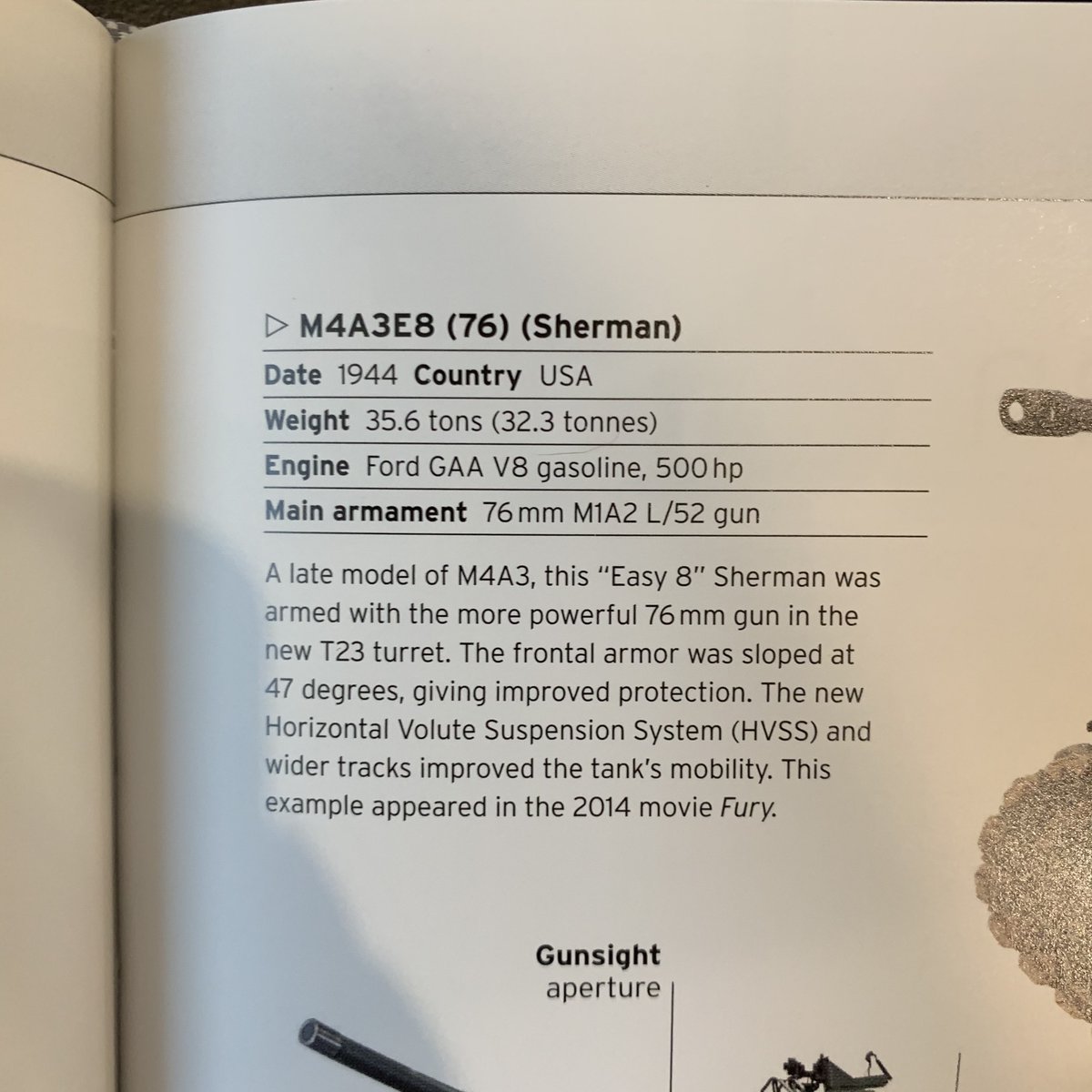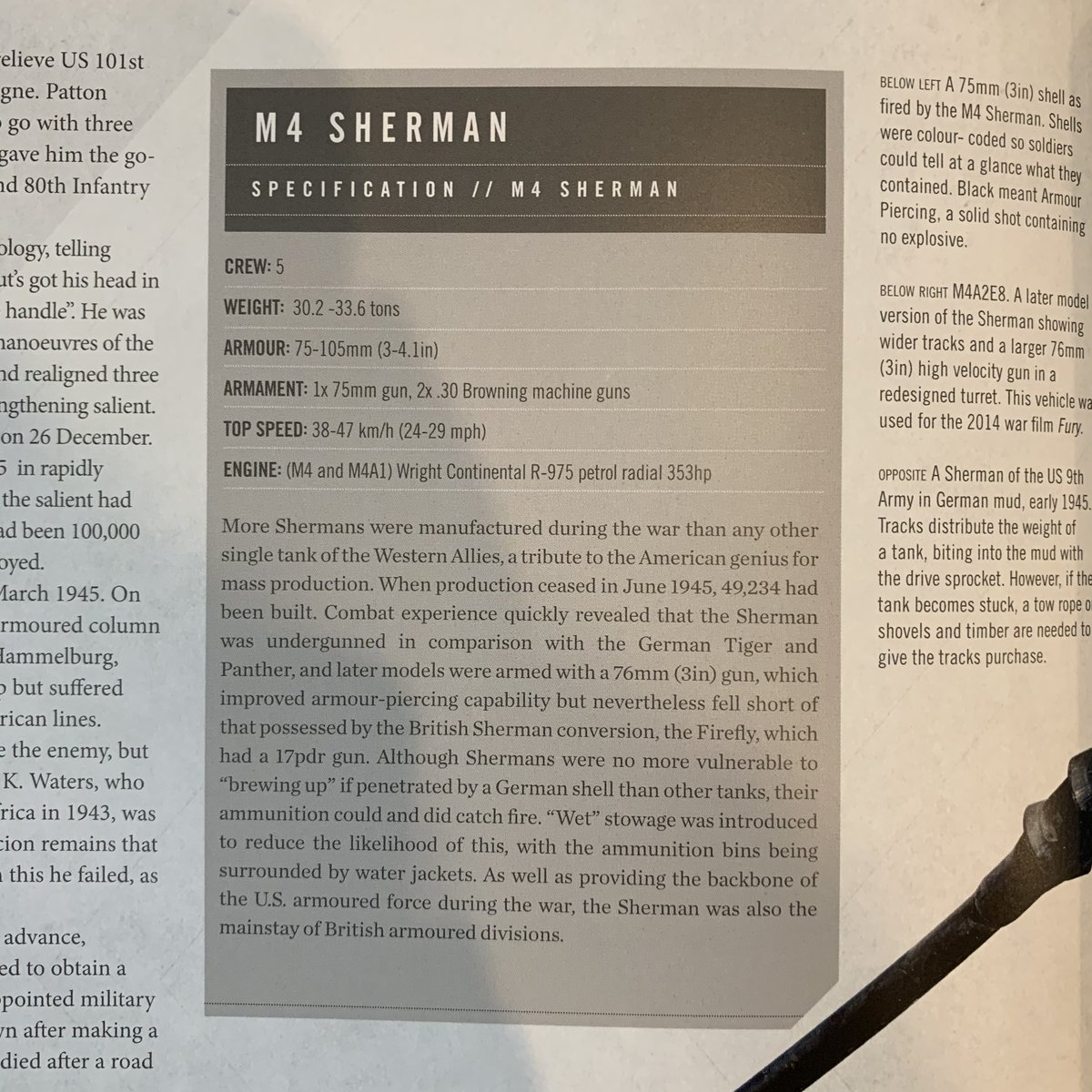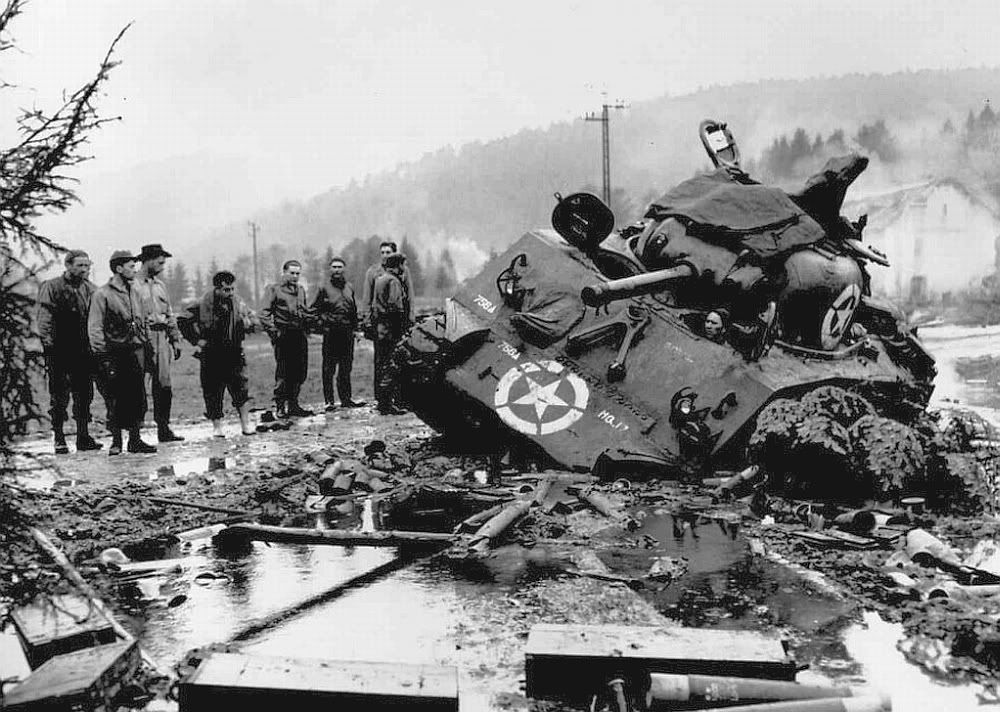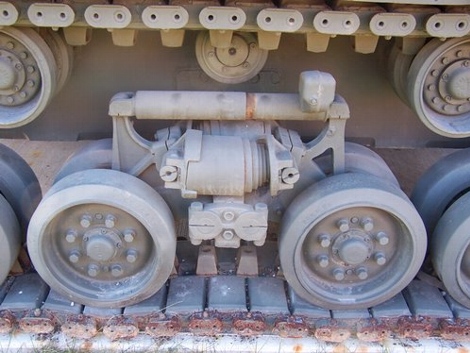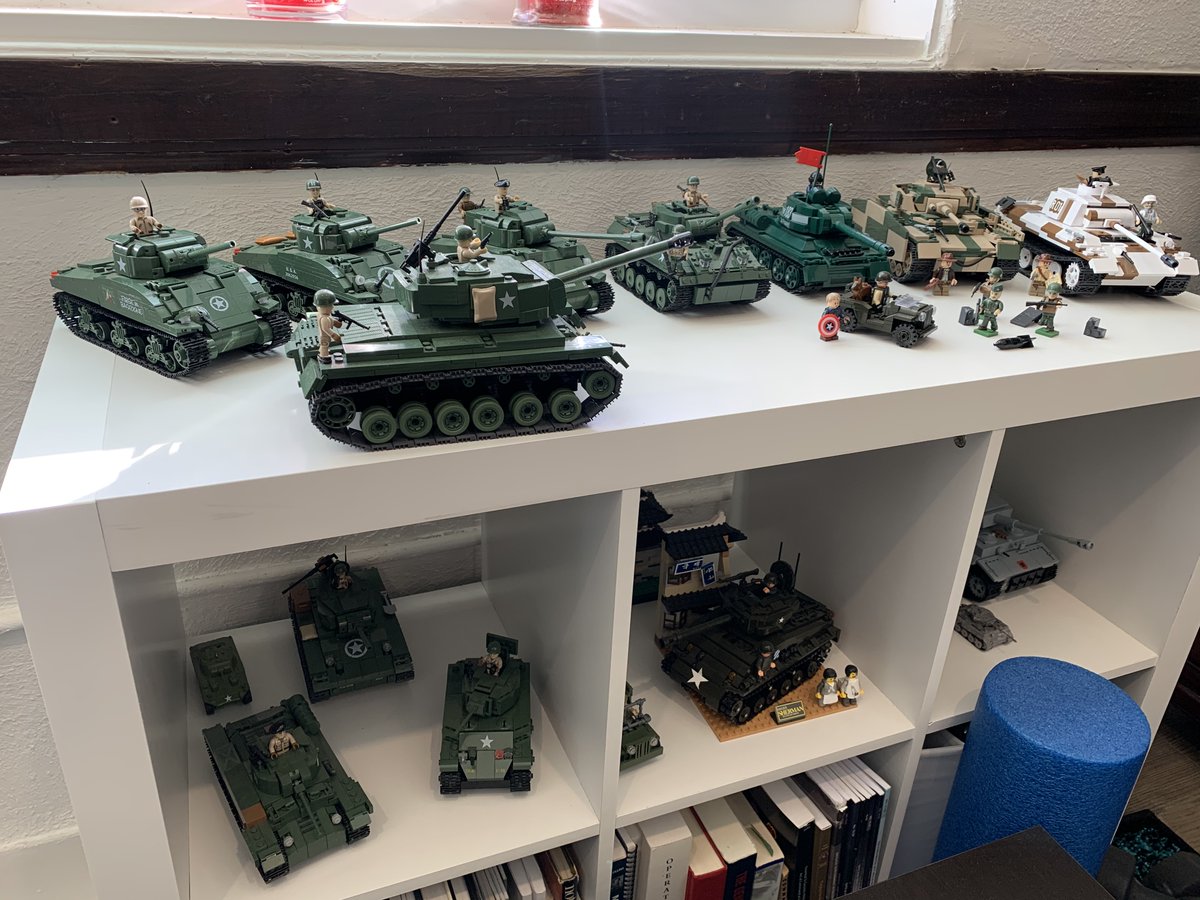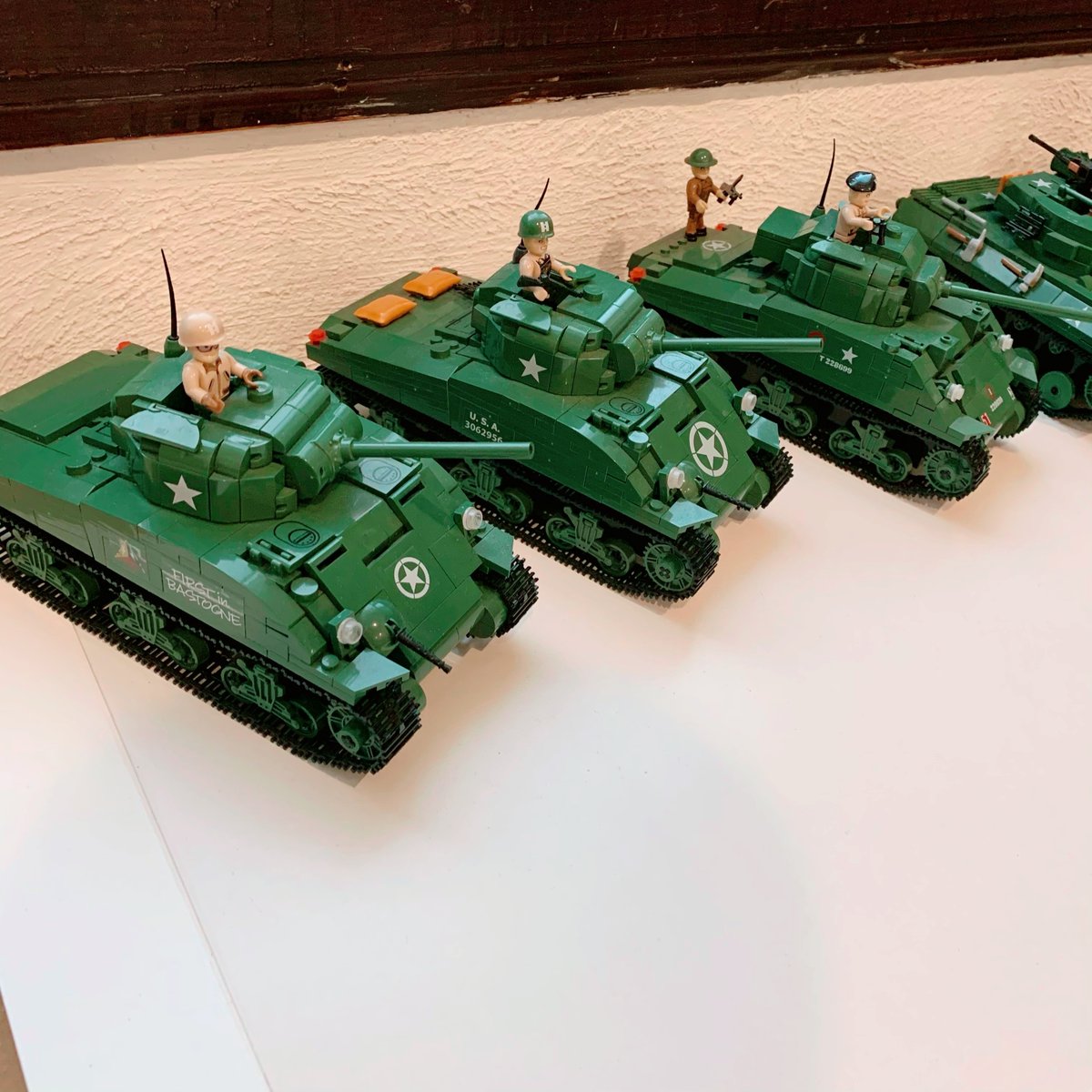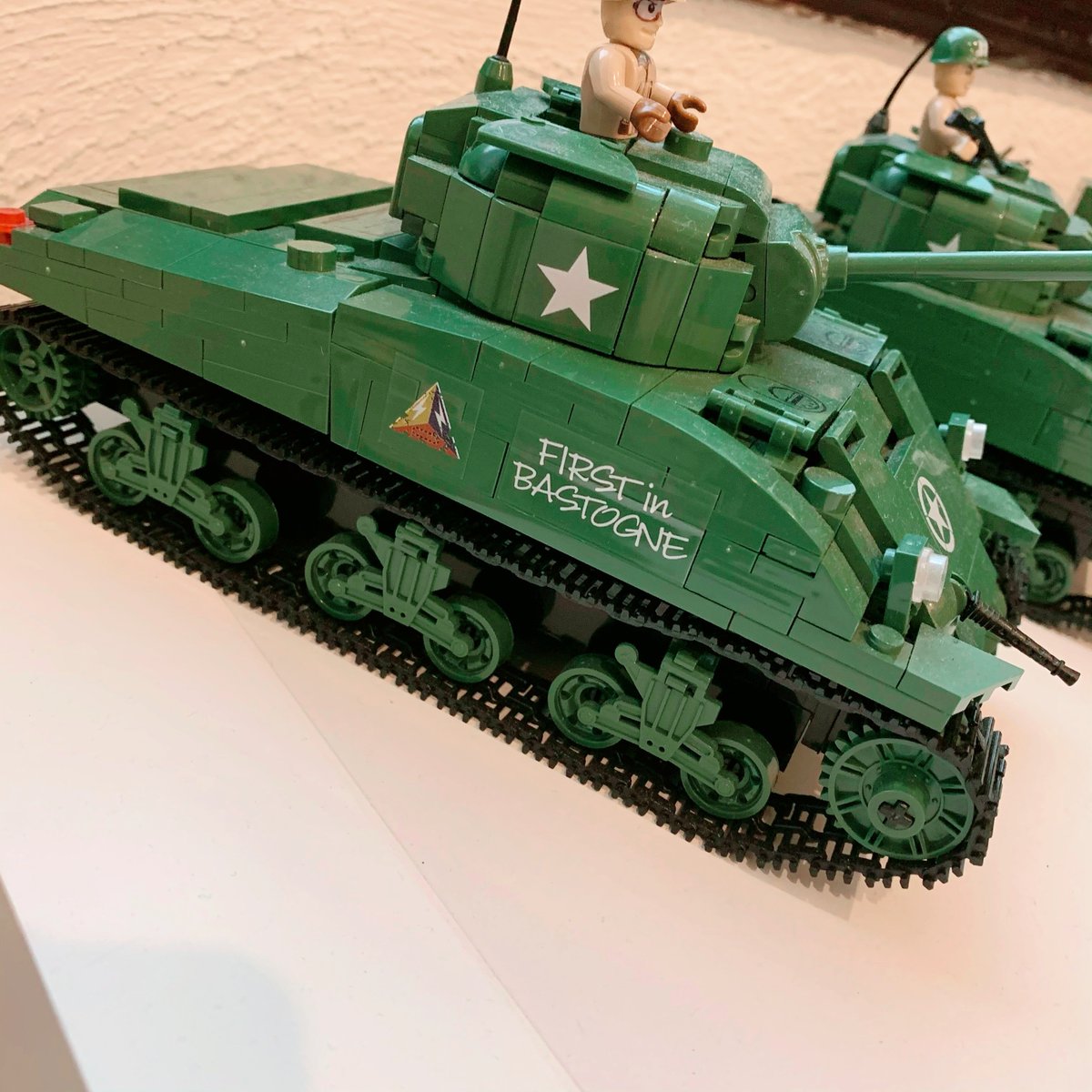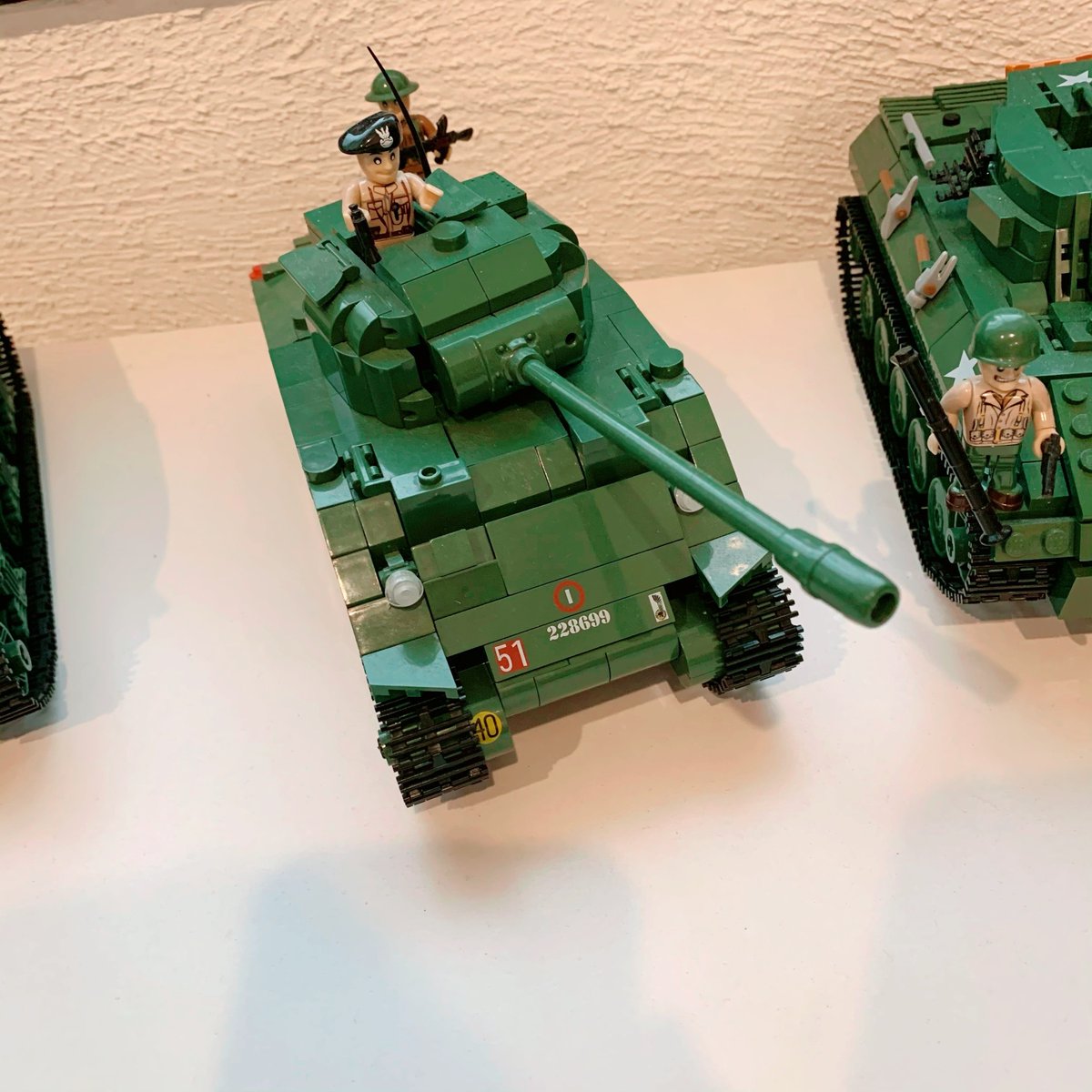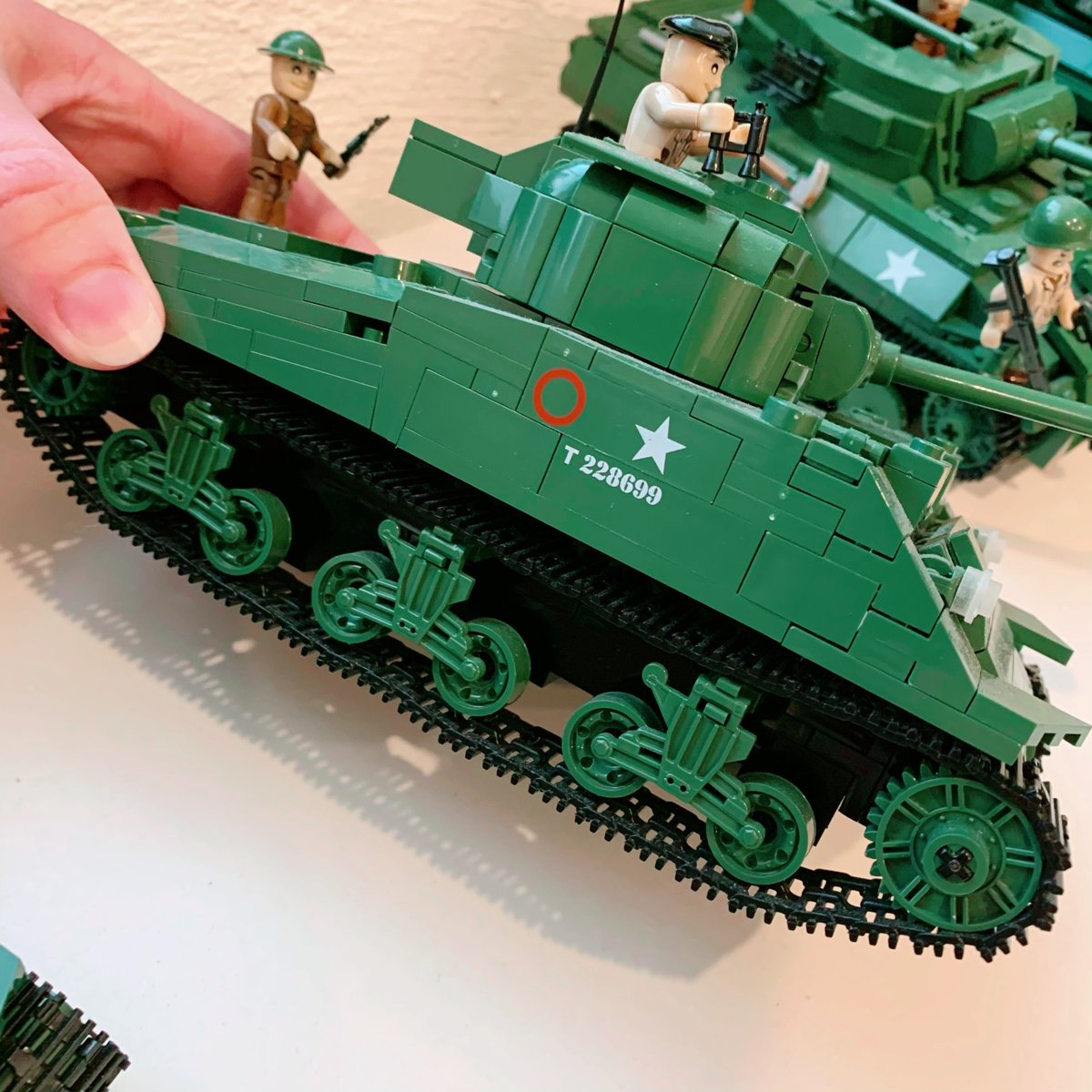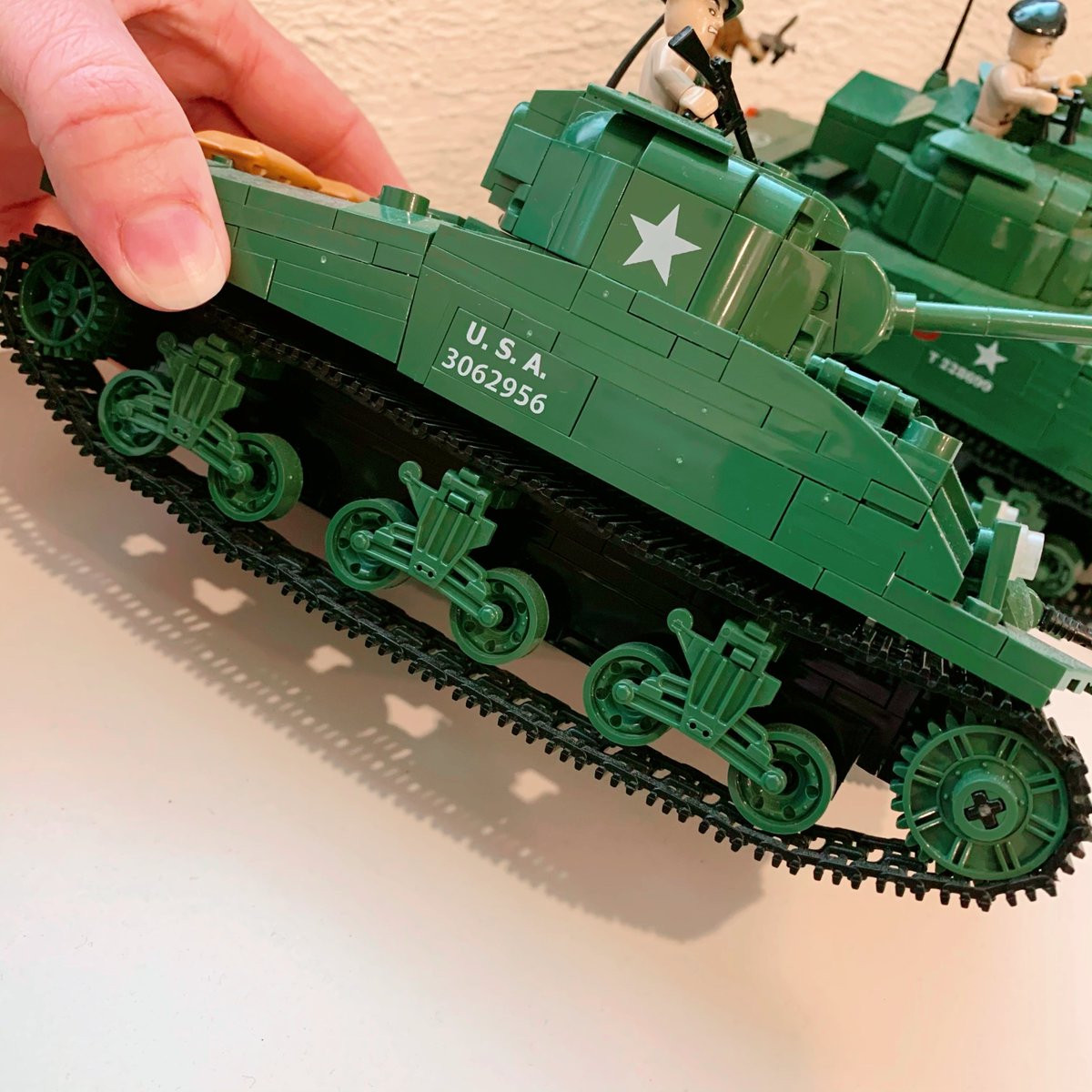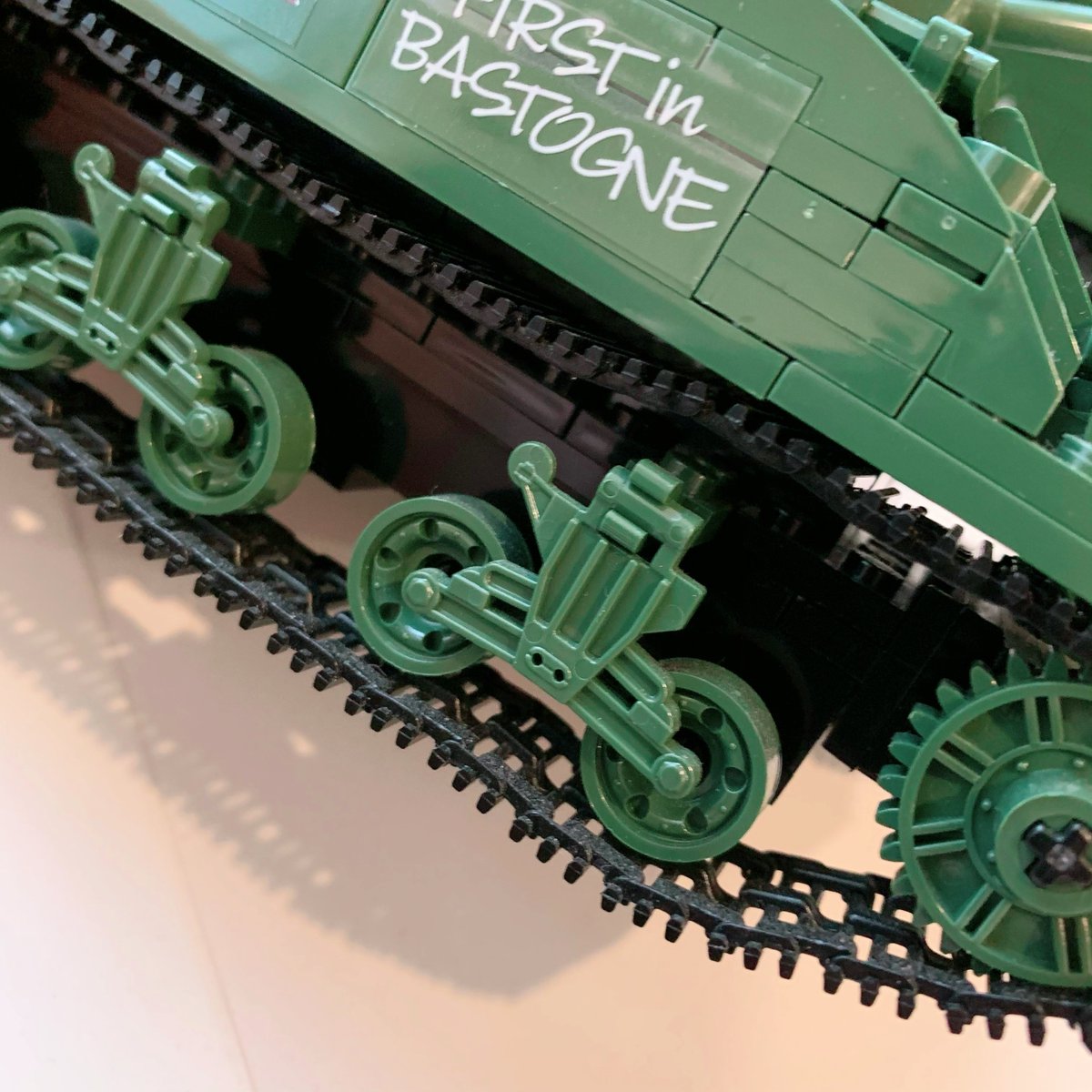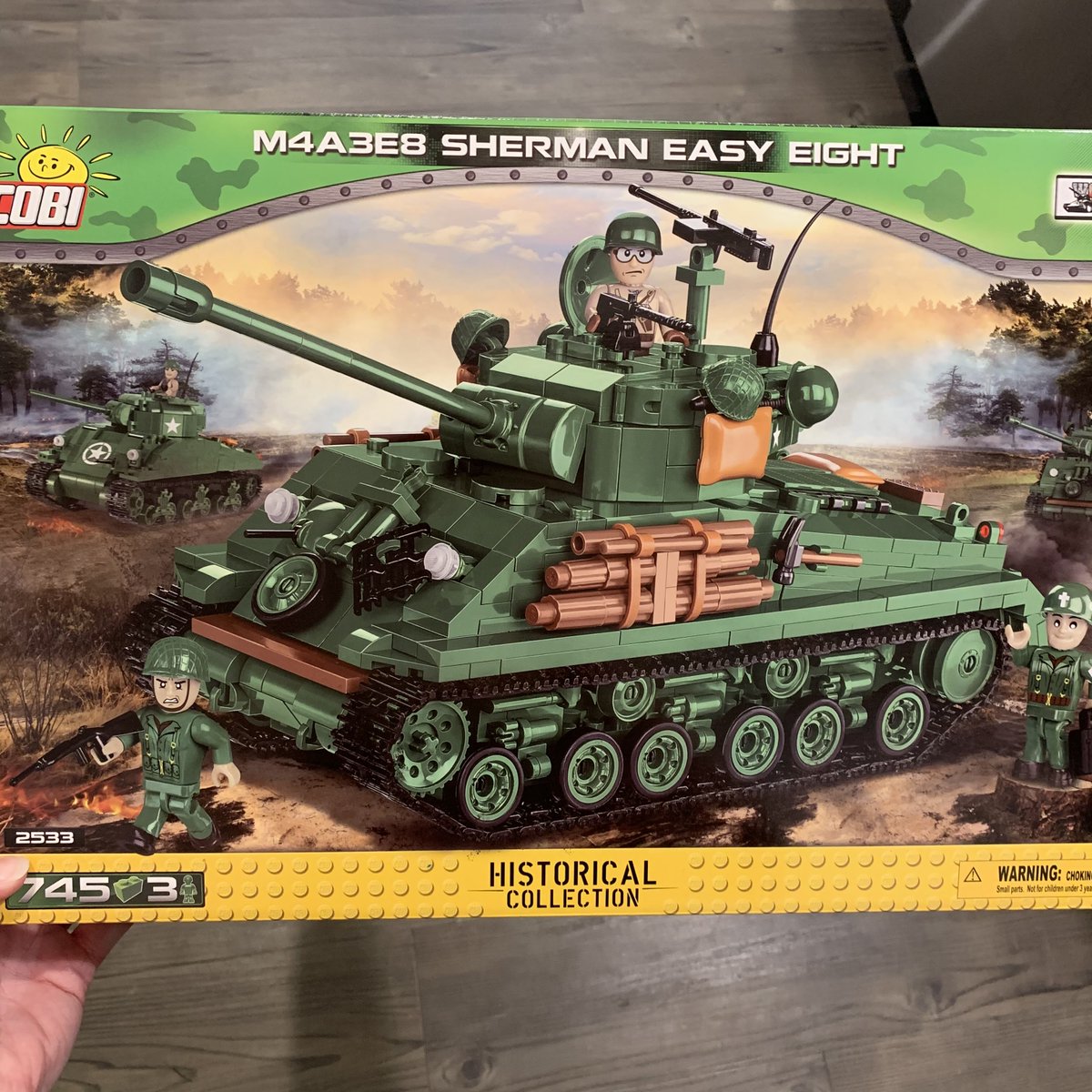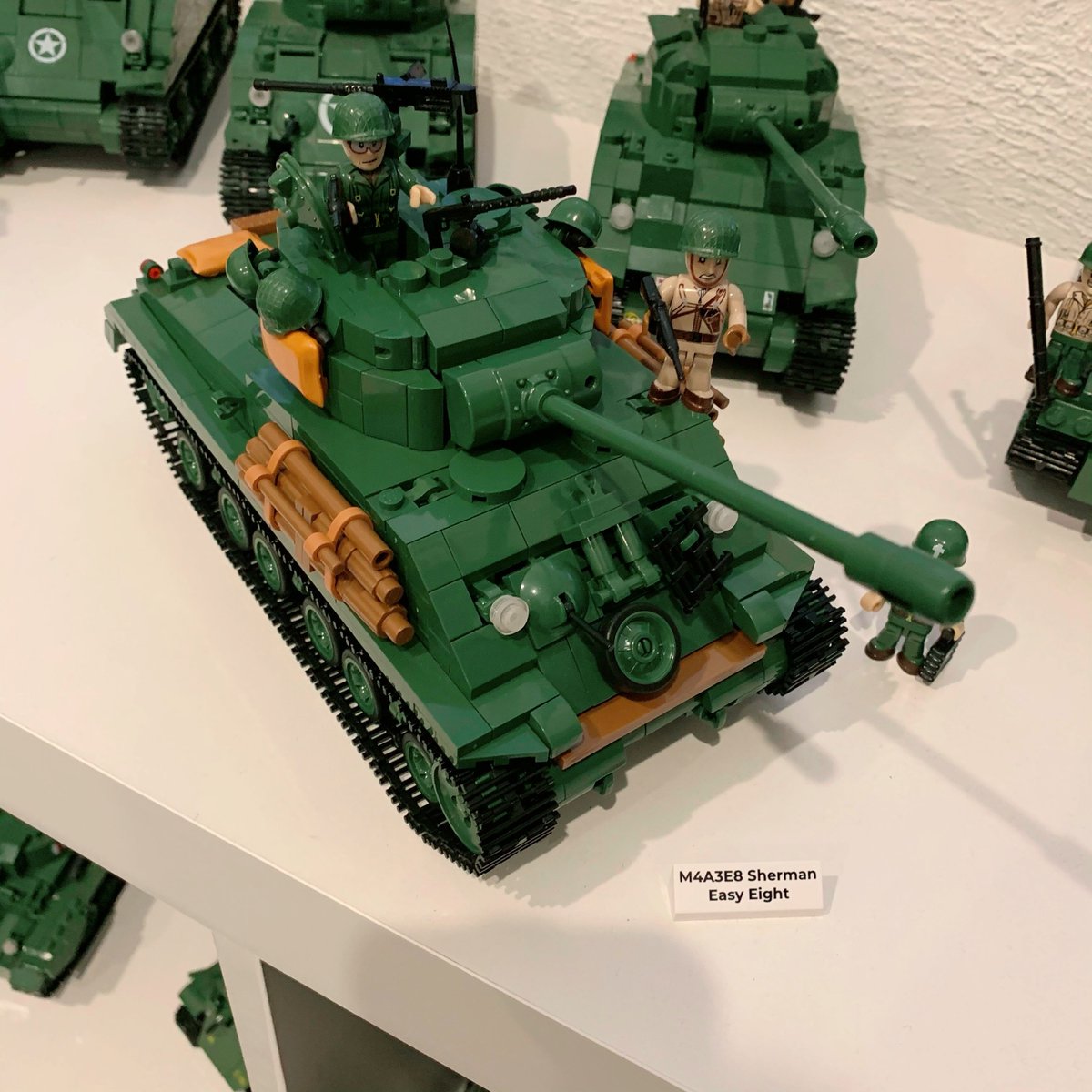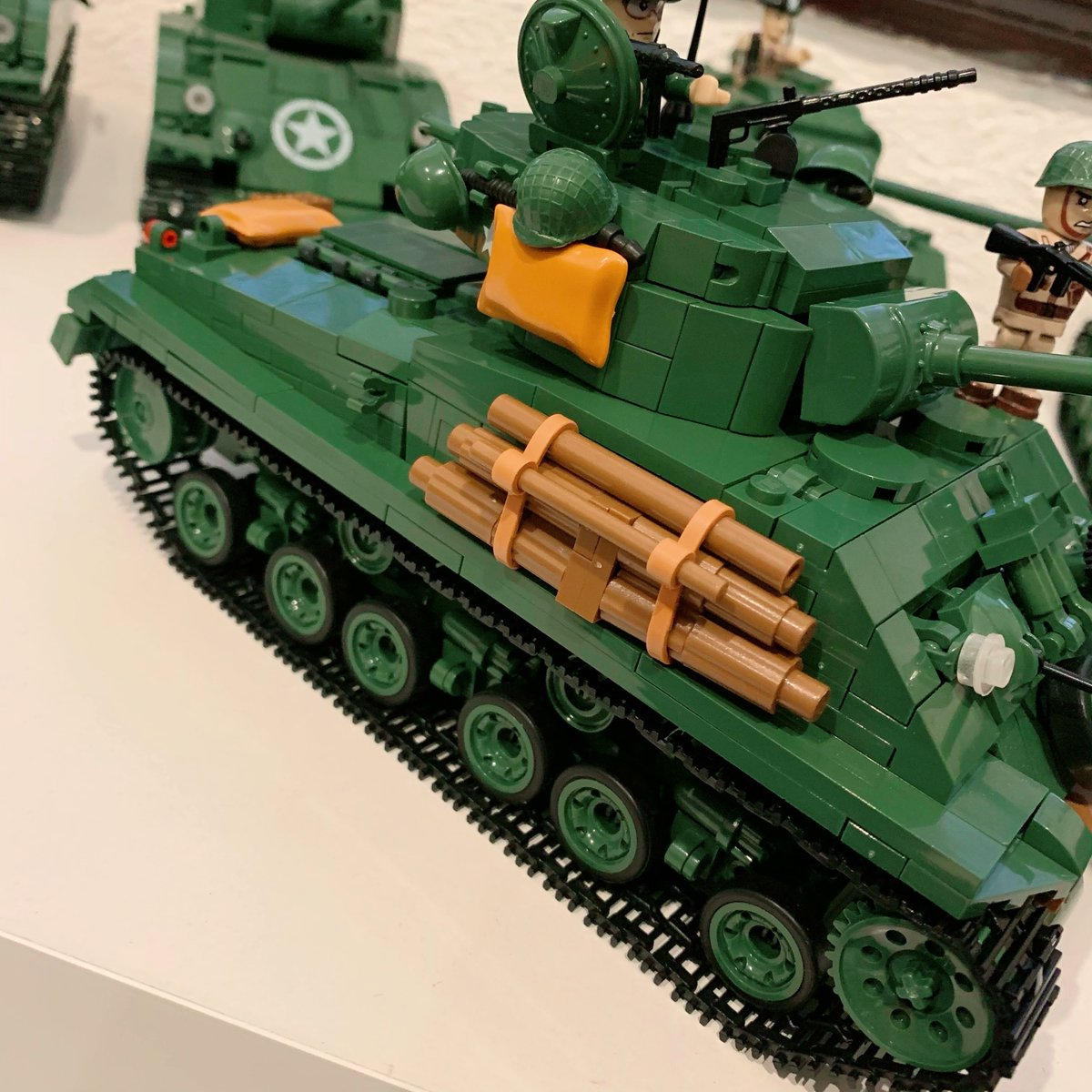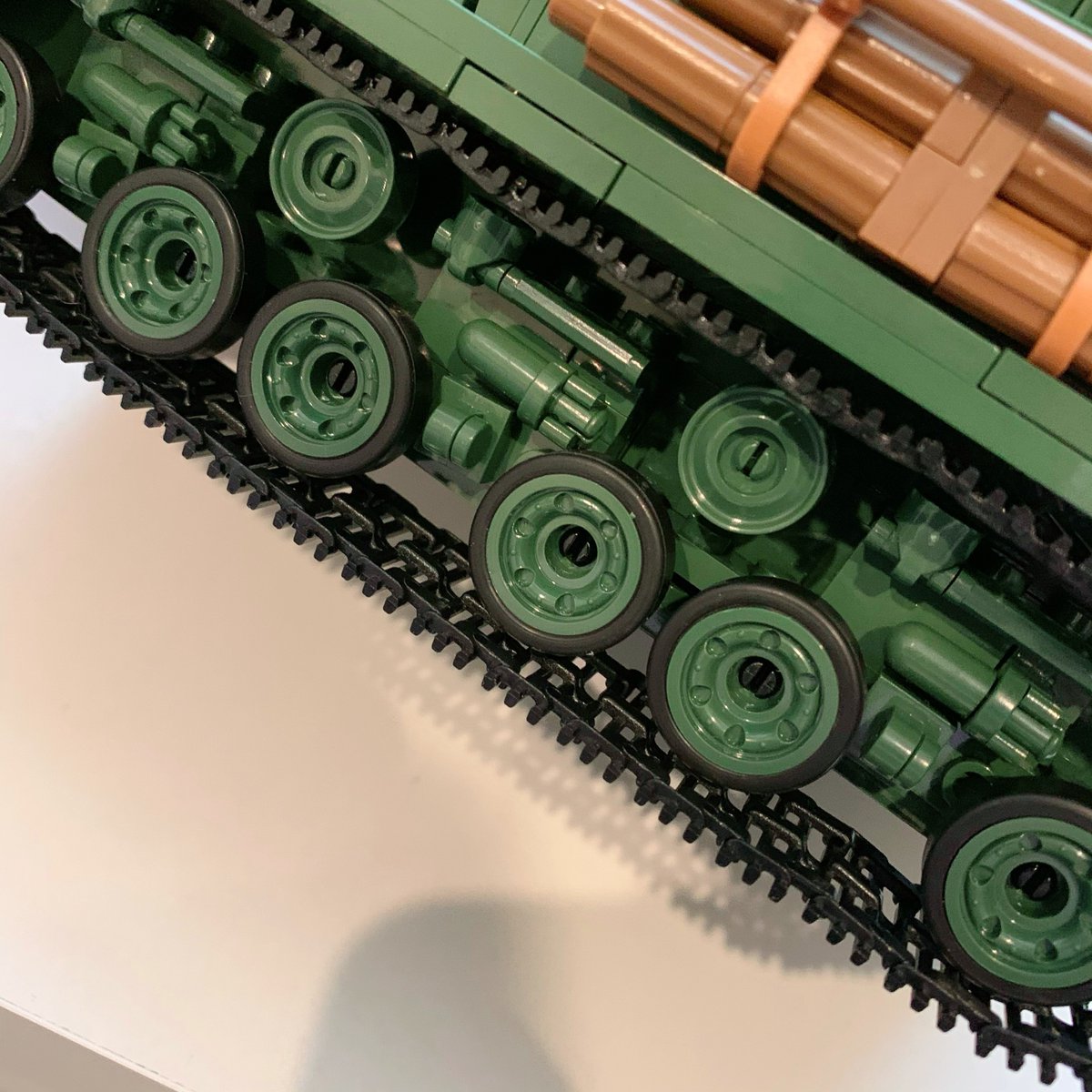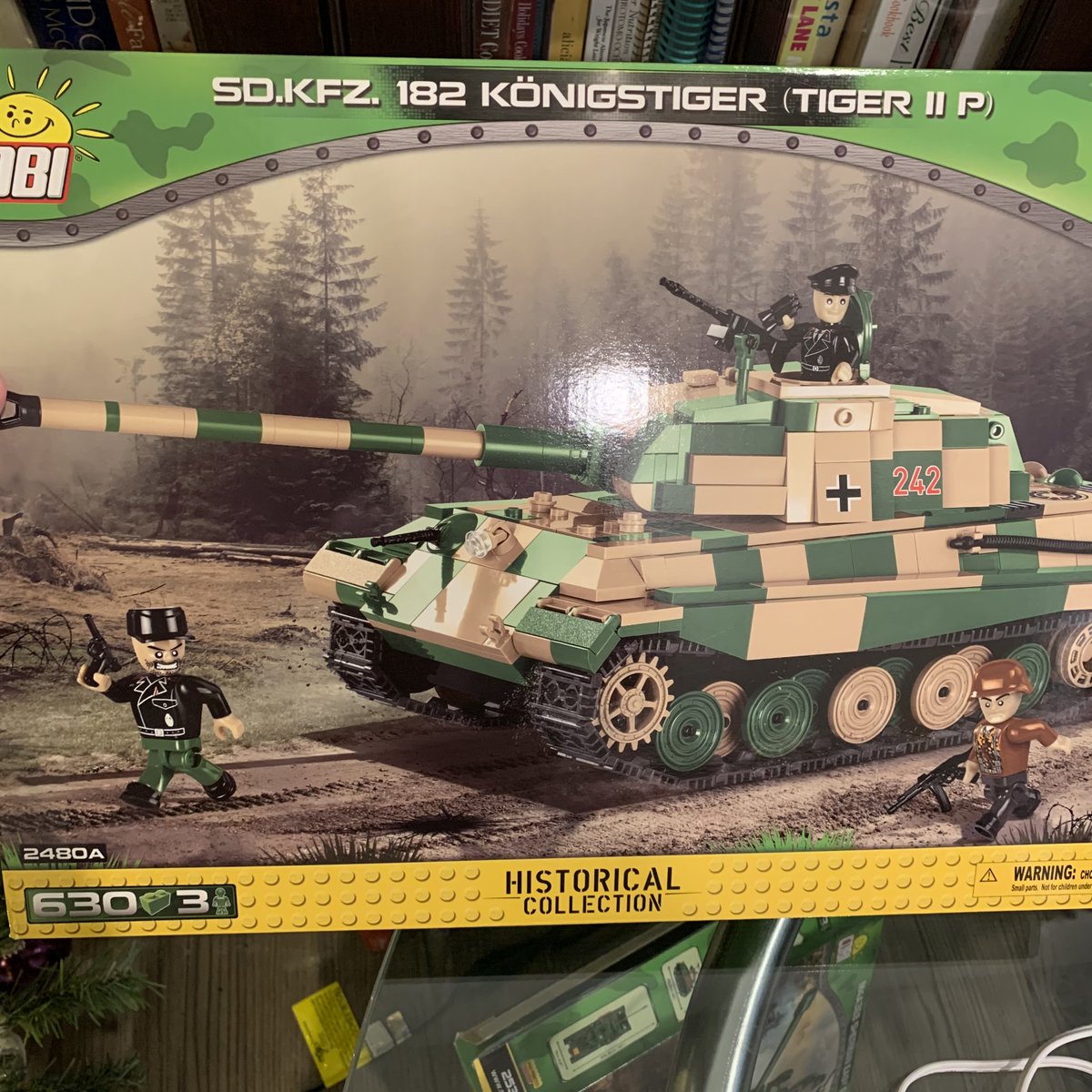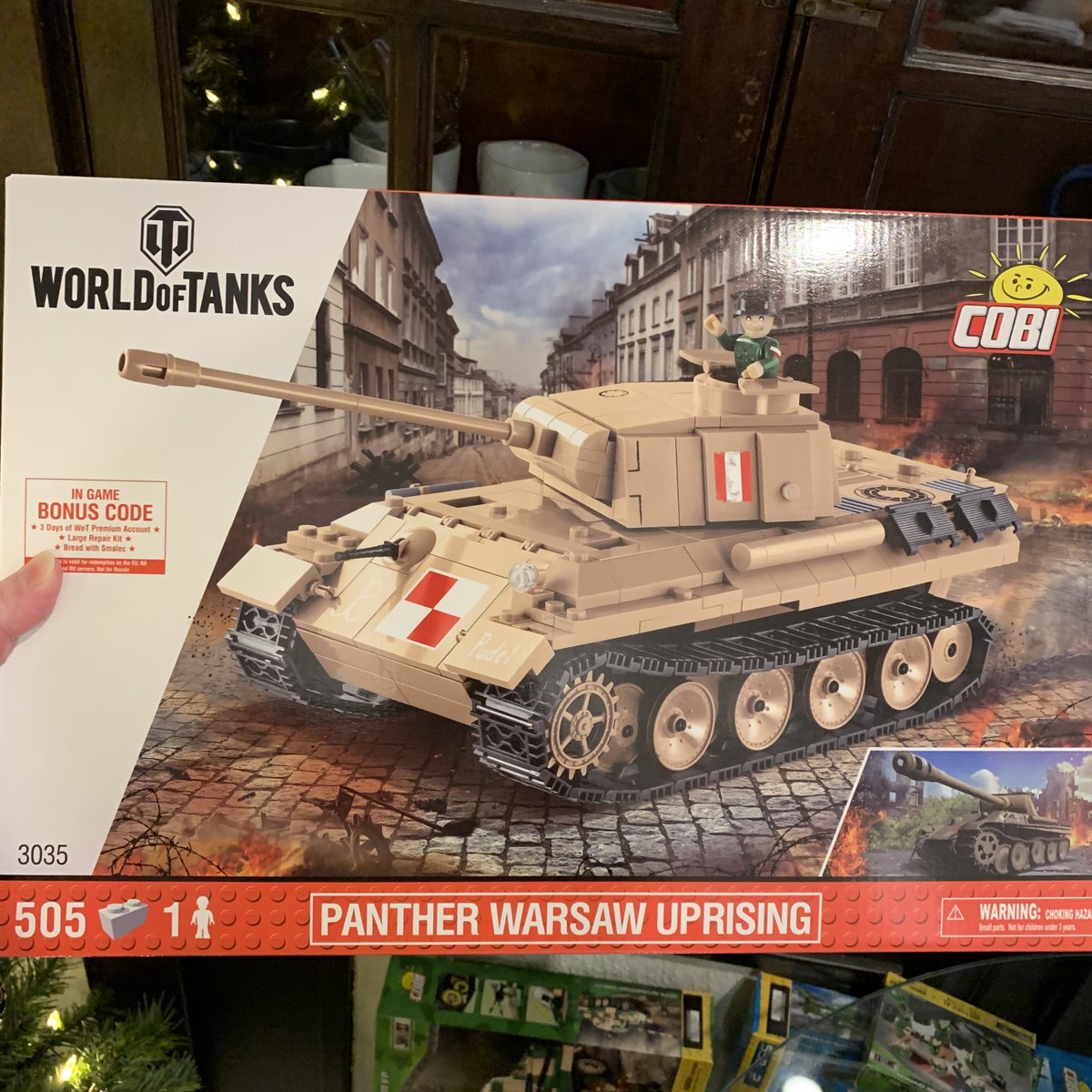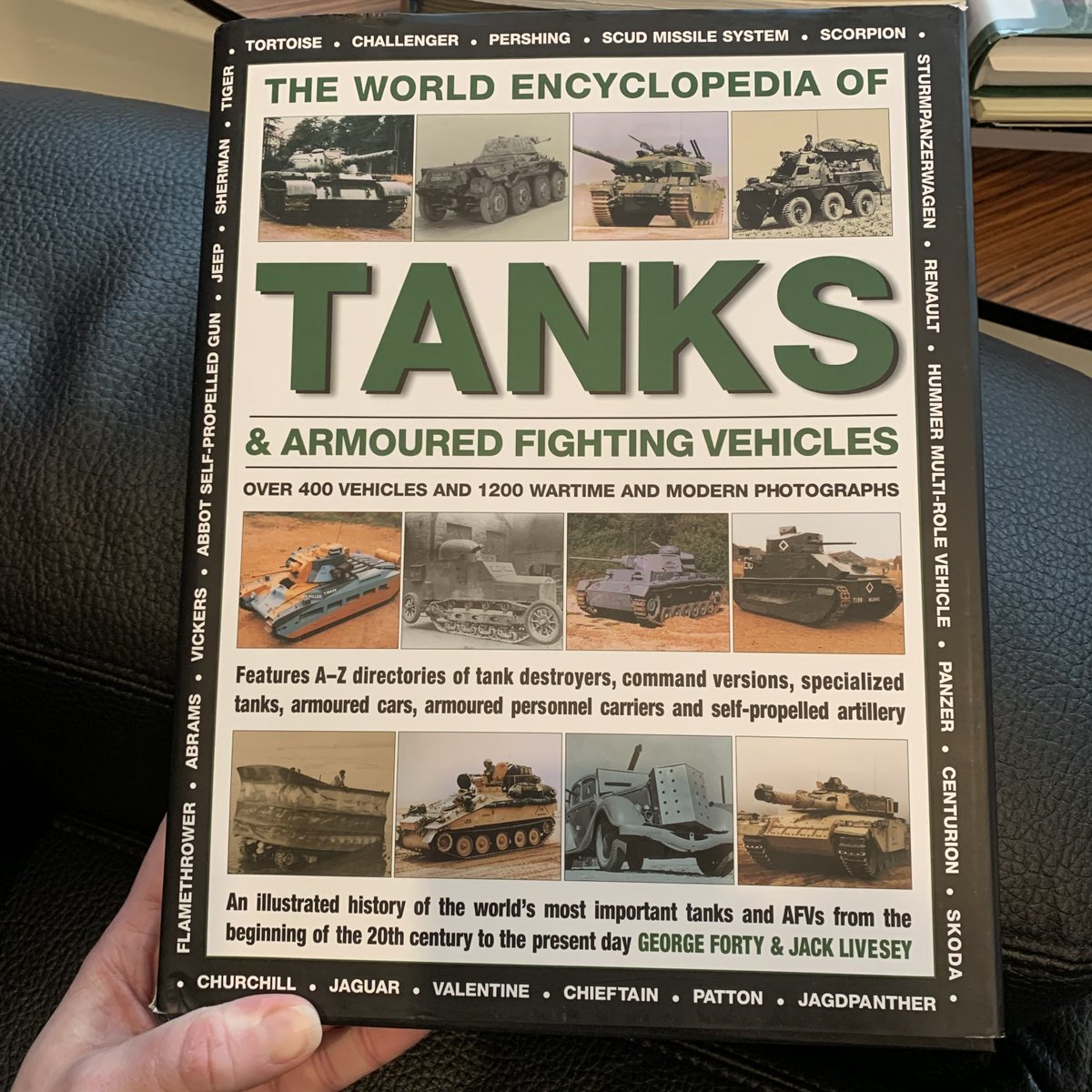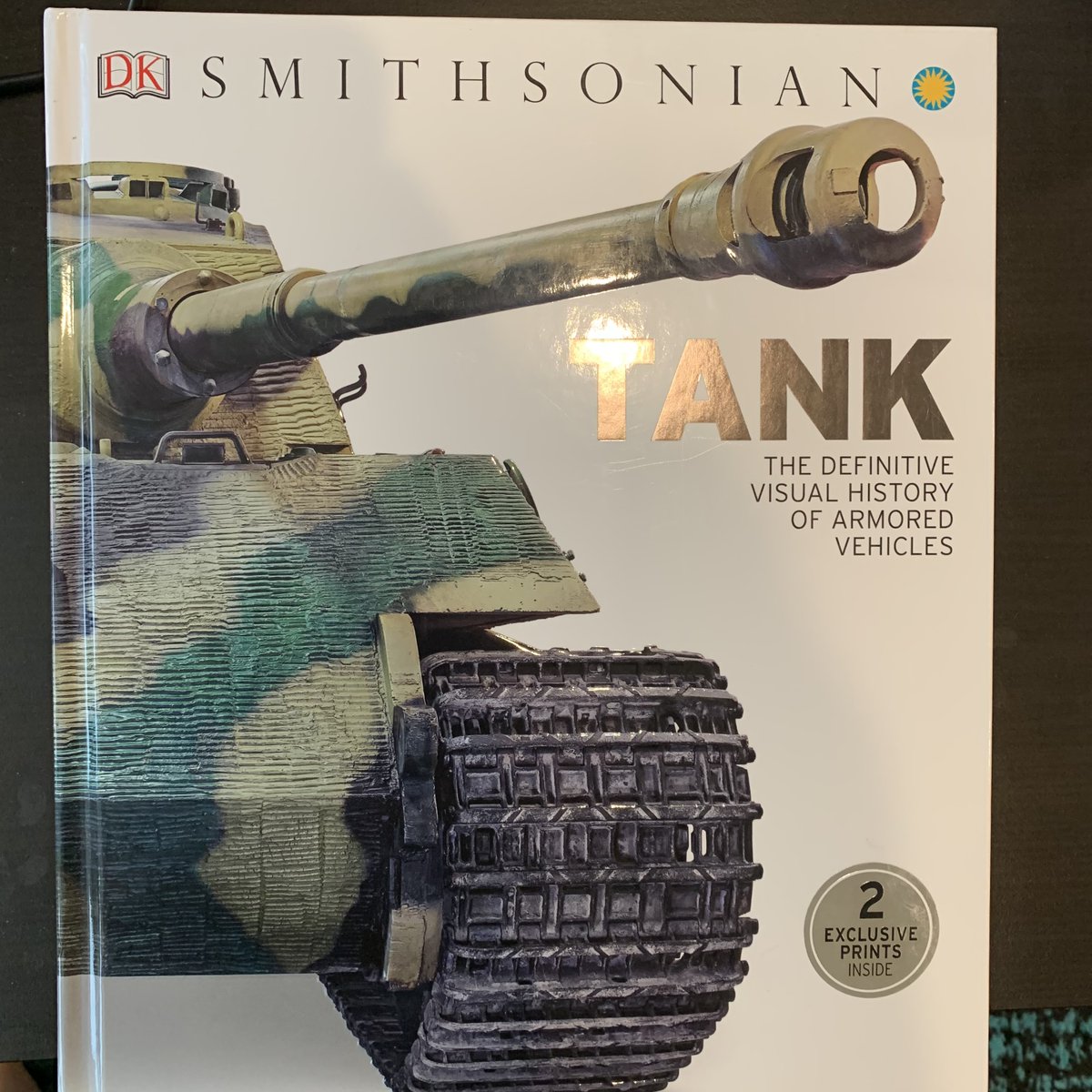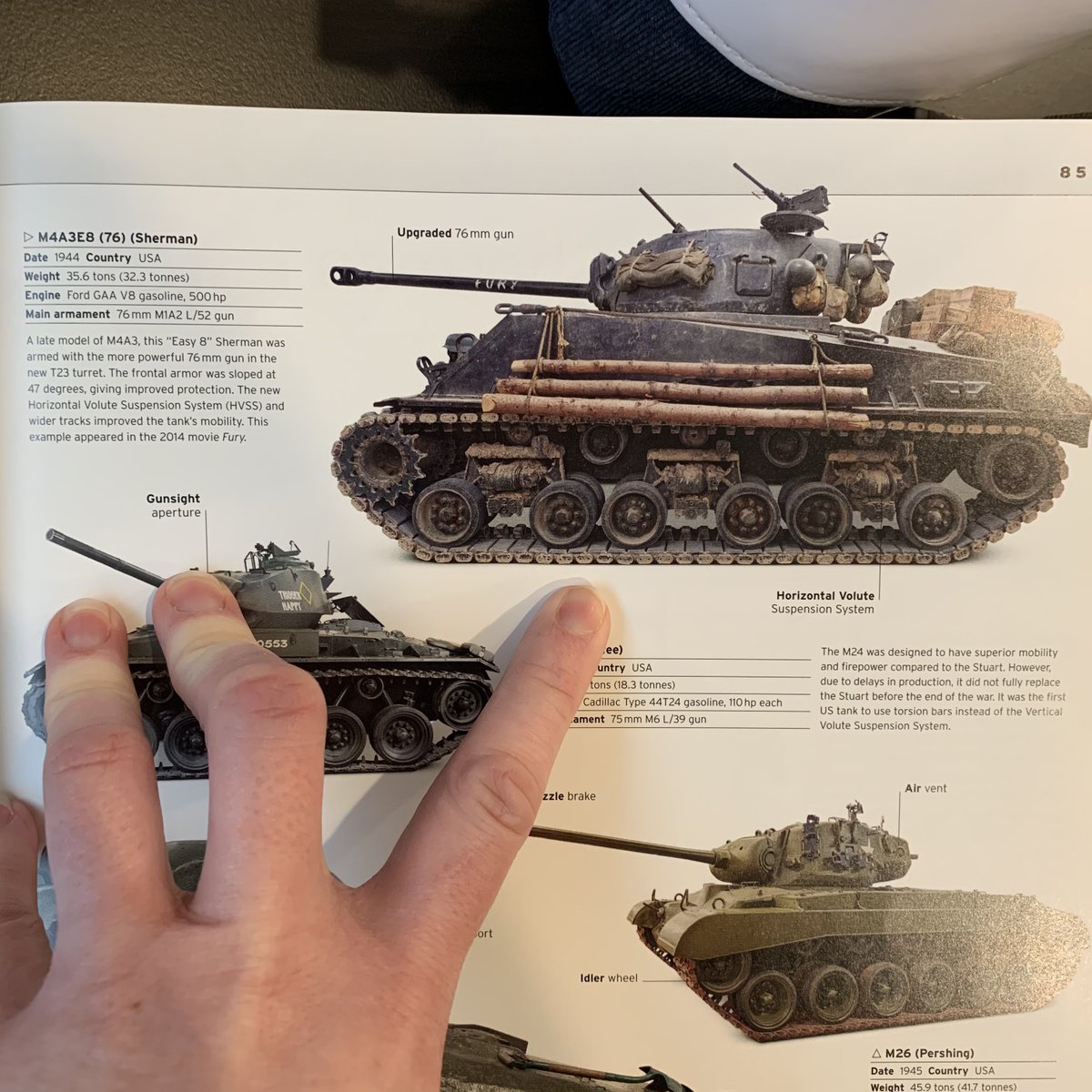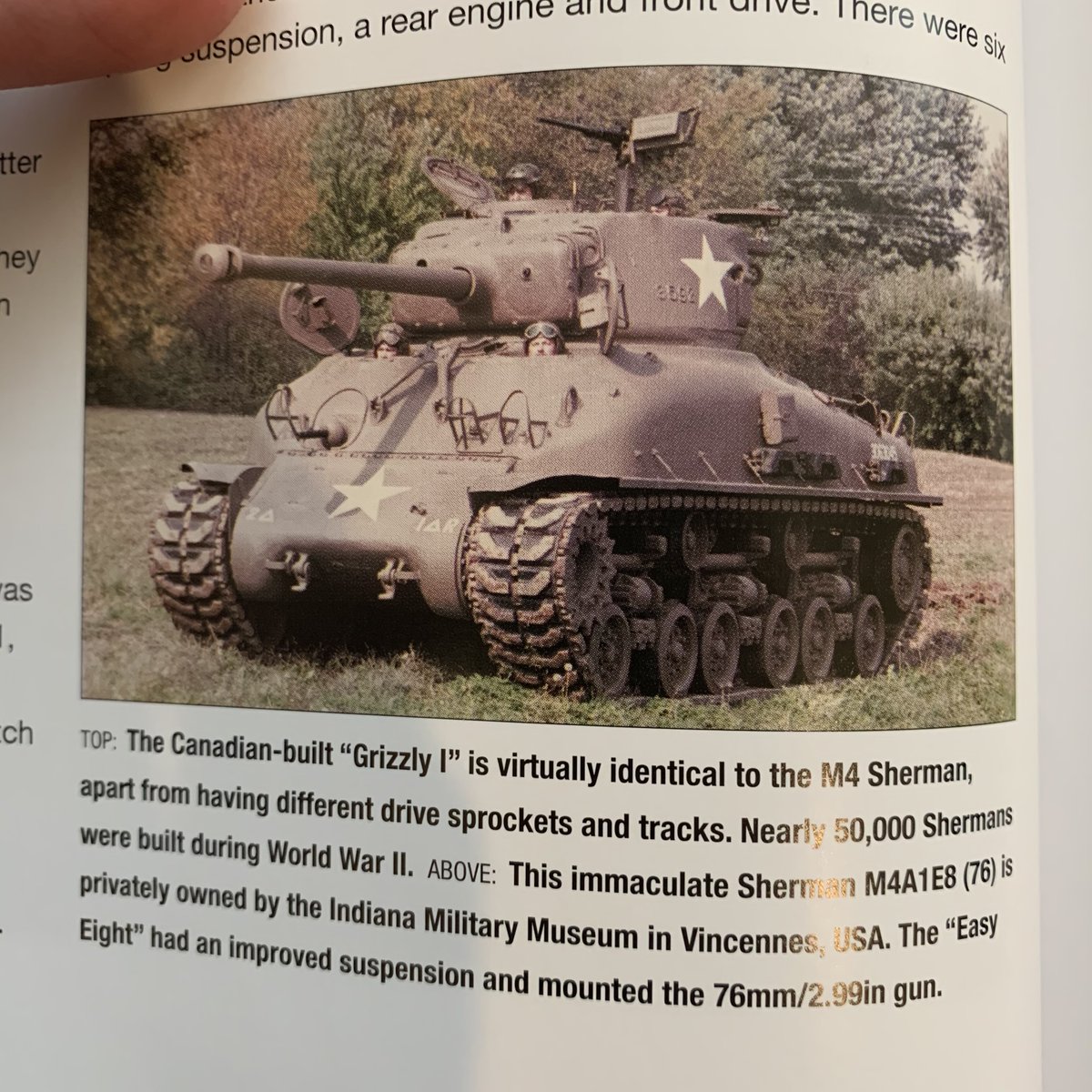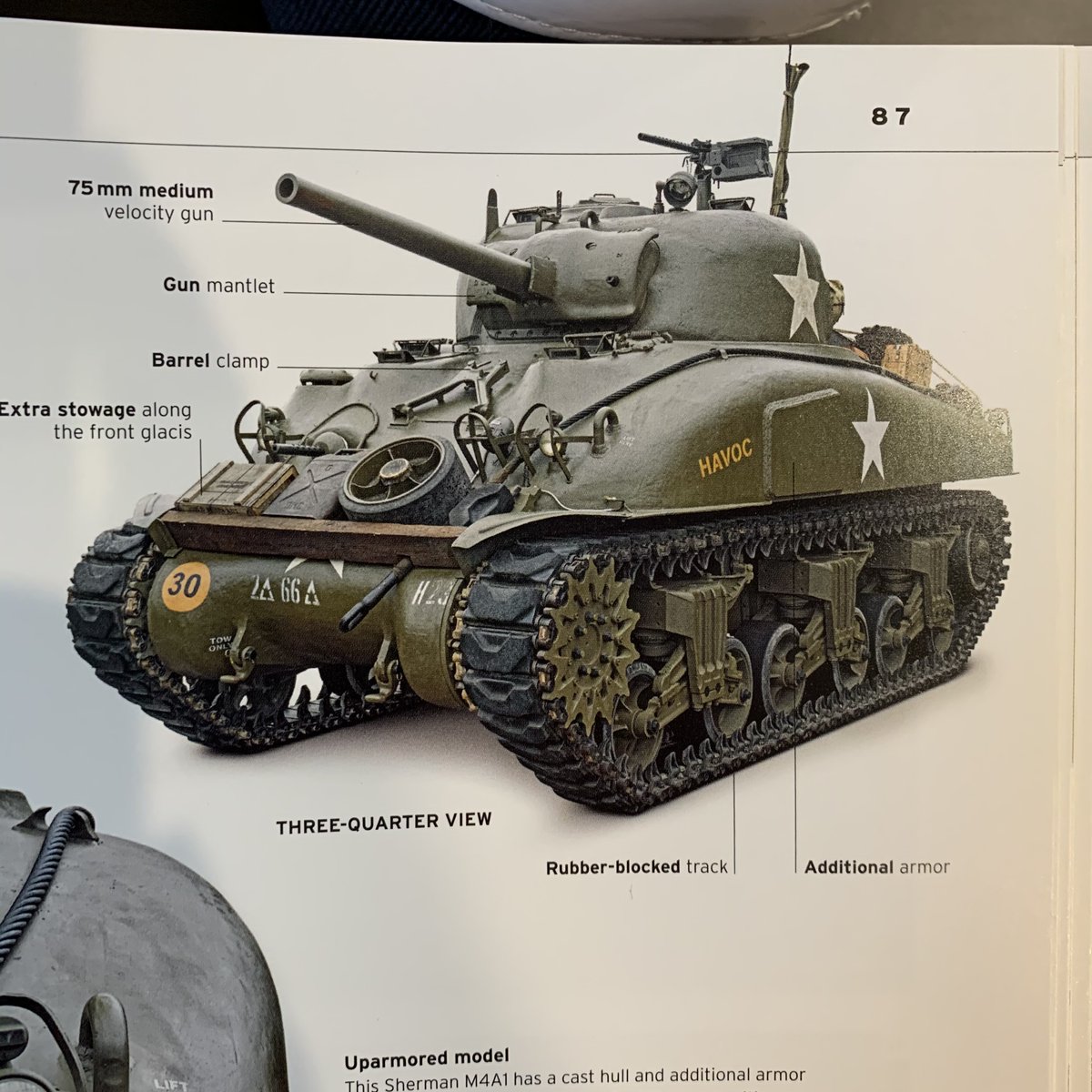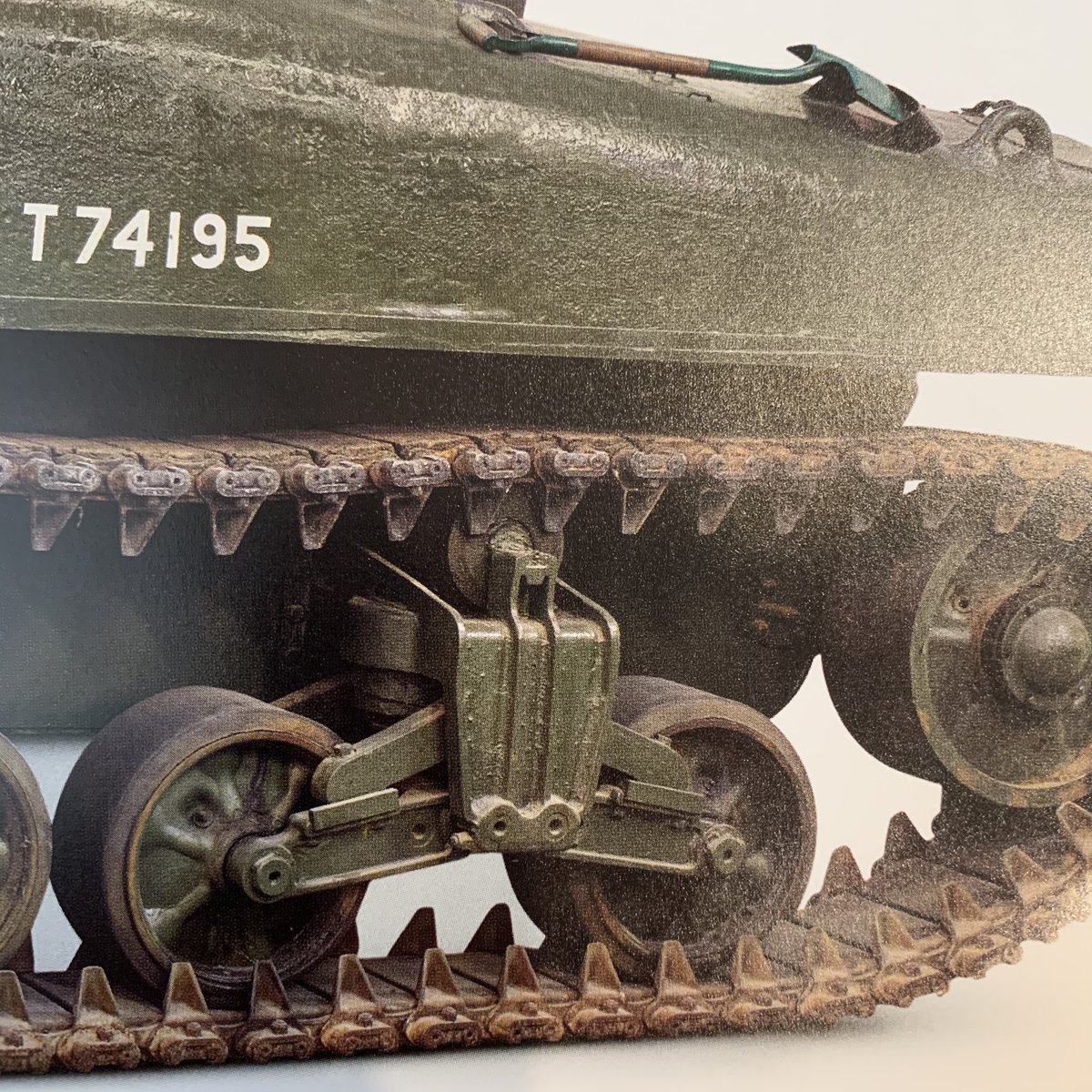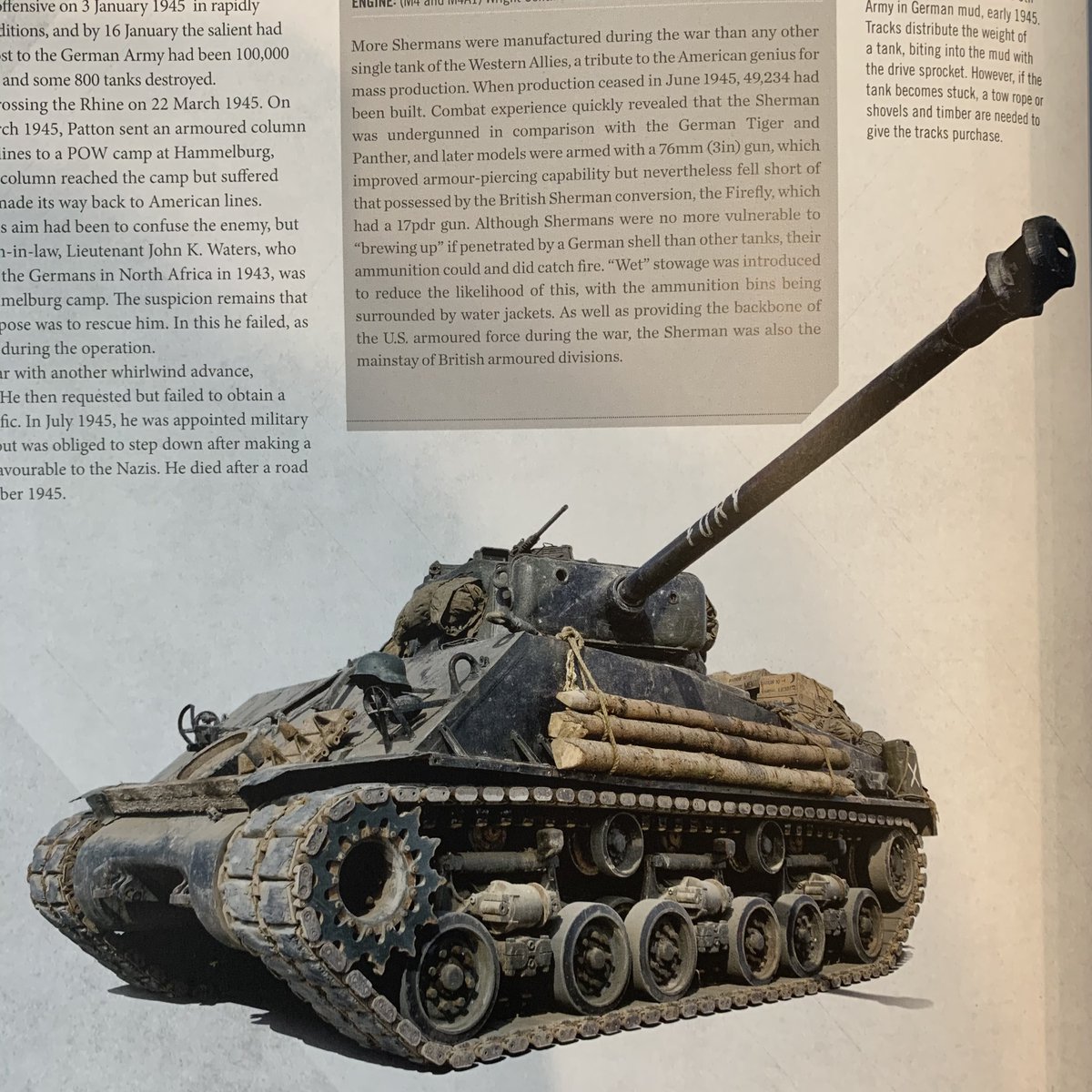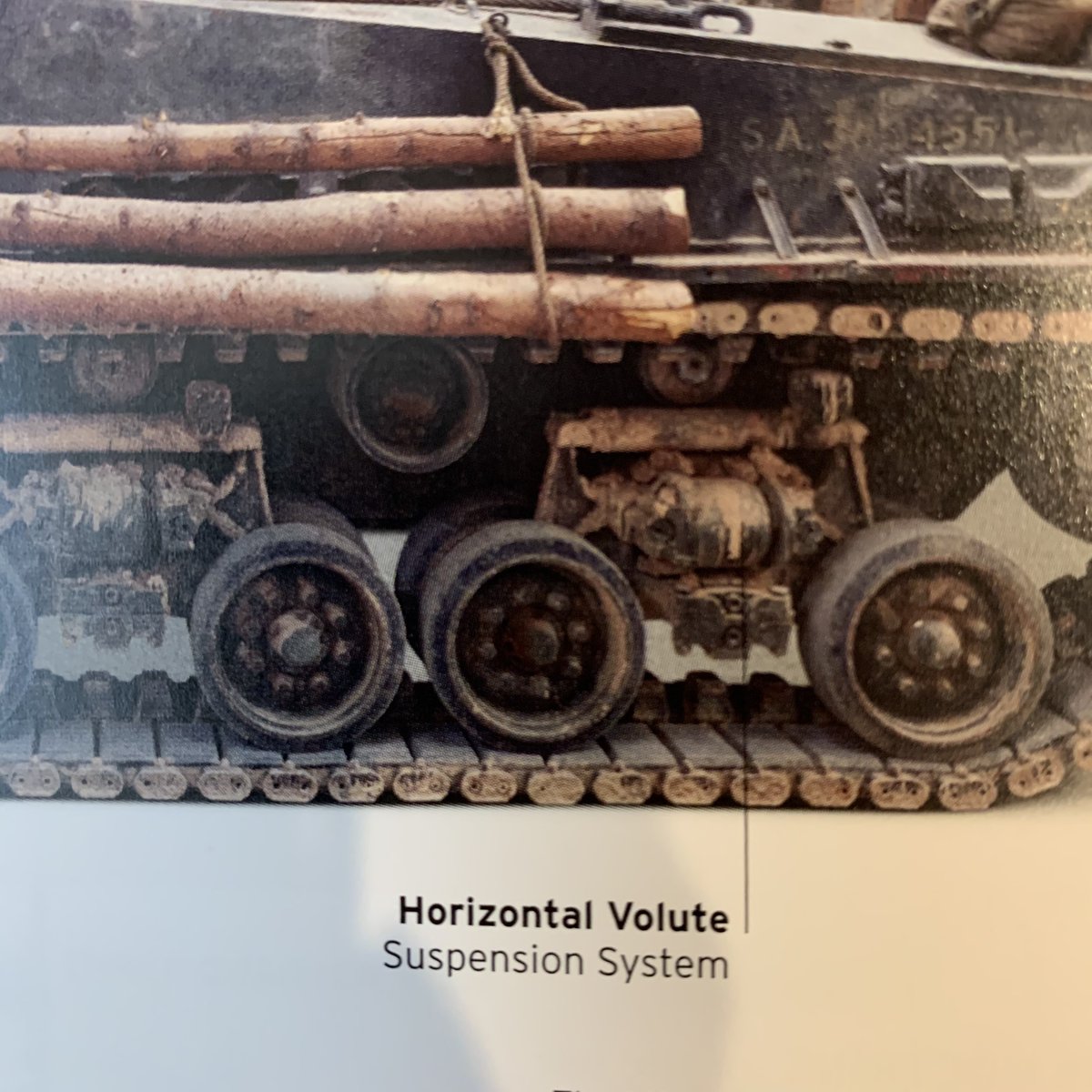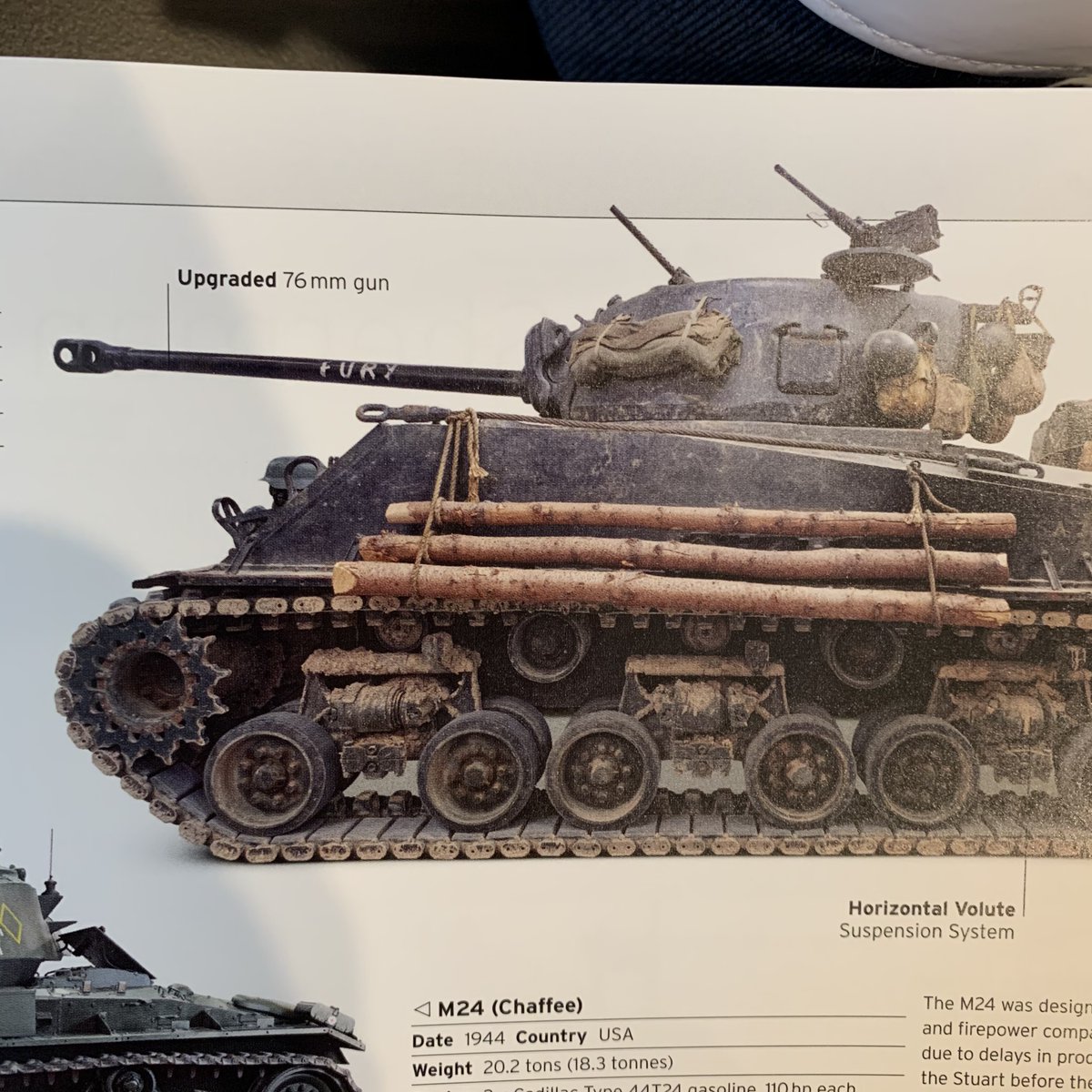You know what we haven’t done since I moved? #TankTuesday
And I’m sorry about that. I mean, I have legitimate excuses – moving halfway across the country, changing jobs, etc. but still.
And I’m sorry about that. I mean, I have legitimate excuses – moving halfway across the country, changing jobs, etc. but still.
I wanted to share pics of something and figured I’d tie them into a short Tank Tuesday thread on the beloved Sherman.
The M4 Sherman tank has an almost mythical history, partly filtered through nostalgia. They were employed by the US as well as others, including the UK and the Soviet Union, and they were used in all theaters, though most of us tend to instantly imagine  https://abs.twimg.com/emoji/v2/... draggable="false" alt="🇺🇸" title="Flagge der Vereinigten Staaten" aria-label="Emoji: Flagge der Vereinigten Staaten"> Shermans in Europe.
https://abs.twimg.com/emoji/v2/... draggable="false" alt="🇺🇸" title="Flagge der Vereinigten Staaten" aria-label="Emoji: Flagge der Vereinigten Staaten"> Shermans in Europe.
We actually started out with the M3 Grant / Lee but we knew going into the war that we needed more than we had. And part of the problem was the Doctrine.
In 1940, US Army Doctrine placed tanks in roles of infantry support and exploitation – capitalize on a breakthrough with speed and enough firepower and protection to wreak havoc inside enemy lines. We’re going to talk more about Doctrine in January, so I won’t go in depth here.
When the Sherman was ready for production, it offered the speed necessary for this role, as well as a dual-purpose gun, rugged design, and relatively simple maintenance needs (that’s an oversimplification but not inaccurate).
The US had 11 factories nationwide that could produce Sherman tanks, and interestingly none of them had prior experience in building tanks before being tasked with this important purpose.
By the end of 1940, so about this time 80 years ago, we had 365 Sherman tanks ready to go to war. And by the end of WWII, we had produced almost 50,000 of them. And that’s not including all variants and derivatives – I think the total was over 63,000.
Anyway, we have this M4 tank built to replace the M3, but we’re still using a 75mm gun, narrow track links, and the Vertical Volute Spring Suspension (VVSS) – all found on the M3 Grant/Lee. But we go to war with the tools we have so throughout WWII the Sherman saw some changes.
That VVSS, in particular, was a problem. Stemming from 1930s innovation, US armor development started incorporating this VVSS system in an effort to make tanks more reliable. Other developments included rear-mounted engines and rubber-bushed tracks.
The early Sherman tanks had 16”-wide tracks and a Vertical Volute Spring Suspension system that generally looks like this (from M3 and M4 tanks):
There were some changes with each tank and some of the variants. For example, as tanks got a bit heavier, the VVSS system that had been in use came under too much pressure, causing engine failures. So changes were made to the engine and the return roller configuration.
The M3A4 was the only M3 model to get factory-installed, heavy duty VVSS changes. These features would initially be standard on the M4 tank, with some tweaking.
The narrow tracks with the VVSS system reduced some mobility for Sherman tanks with regard to softer terrain like mud and sand. Compared to the German Panther and Tiger tanks, the VVSS Shermans didn’t perform as well off-road, and mud was an increasing issue in the war.
As developments & improvements impacted the Shermans& #39; weight, the suspension system again needed to change. Combat proved a significant strain on the VVSS system as well, and from about mid-1944 on, the Sherman tanks were given a Horizontal Volute Spring Suspension (HVSS).
The HVSS system was developed off an older British suspension design. This proved to be a much stronger, heavier duty suspension system.
Using horizontally-positioned volute springs, if either the front or rear wheel-arm of each dual-mounted configuration compressed the spring, that pressure was transferred to the opposite wheel-arm which helped keep tension on the tracks.
The tracks were also wider, like 23”. For the VVSS Shermans there were like 14 different track styles, and that increased to at least 18 styles for the HVSS Shermans. Most of these track variations were attempts to minimize the use of rubber; there were all-steel tracks too.
Another important factor is that the HVSS system was easier to work on and repair if damaged, compared to other suspension systems.
Where was I going with this? Oh yeah! So, you guys remember my lego-ish tanks?
Where was I going with this? Oh yeah! So, you guys remember my lego-ish tanks?
I have a few Shermans. This one is actually a Korean War edition Easy Eight. It’s a lot different from my other tanks, this one is Oxford brand out of South Korea.
COBI released a new Sherman set, the M4A3E8, which I ordered a couple months ago from @Warbricks1 – I had been ordering from Amazon but I like to support family businesses and this one is interesting because they incorporate the business into home schooling.
Now, take a look at this. COBI took the time to design this Easy Eight set with the different suspension.
It took a little longer to assemble than previous sets and I didn’t take the usual progress pics along the way, but I had some help for a change from @roman_simeon and we managed to figure it out together  https://abs.twimg.com/emoji/v2/... draggable="false" alt="🙂" title="Leicht lächelndes Gesicht" aria-label="Emoji: Leicht lächelndes Gesicht">
https://abs.twimg.com/emoji/v2/... draggable="false" alt="🙂" title="Leicht lächelndes Gesicht" aria-label="Emoji: Leicht lächelndes Gesicht">
We still have a “Warsaw Uprising” Panther, a Tiger II, and a C-47 to assemble. Ok that last one isn’t a tank but Airborne will always have a special place in my heart.
I think that& #39;s enough for today. I need to work on a #Tanksgiving thread  https://abs.twimg.com/emoji/v2/... draggable="false" alt="😉" title="Zwinkerndes Gesicht" aria-label="Emoji: Zwinkerndes Gesicht">
https://abs.twimg.com/emoji/v2/... draggable="false" alt="😉" title="Zwinkerndes Gesicht" aria-label="Emoji: Zwinkerndes Gesicht">

 Read on Twitter
Read on Twitter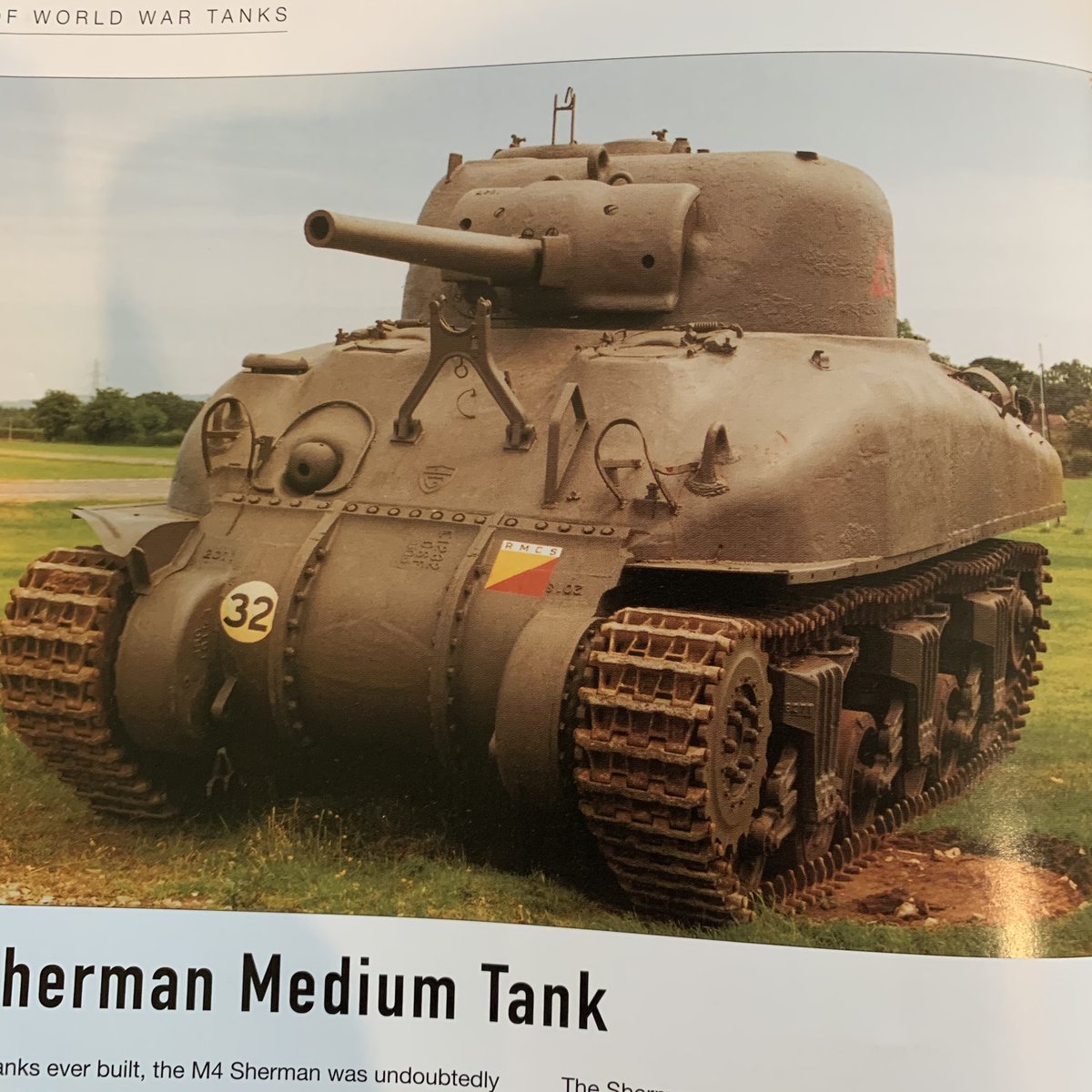
 Shermans in Europe." title="The M4 Sherman tank has an almost mythical history, partly filtered through nostalgia. They were employed by the US as well as others, including the UK and the Soviet Union, and they were used in all theaters, though most of us tend to instantly imagine https://abs.twimg.com/emoji/v2/... draggable="false" alt="🇺🇸" title="Flagge der Vereinigten Staaten" aria-label="Emoji: Flagge der Vereinigten Staaten"> Shermans in Europe.">
Shermans in Europe." title="The M4 Sherman tank has an almost mythical history, partly filtered through nostalgia. They were employed by the US as well as others, including the UK and the Soviet Union, and they were used in all theaters, though most of us tend to instantly imagine https://abs.twimg.com/emoji/v2/... draggable="false" alt="🇺🇸" title="Flagge der Vereinigten Staaten" aria-label="Emoji: Flagge der Vereinigten Staaten"> Shermans in Europe.">
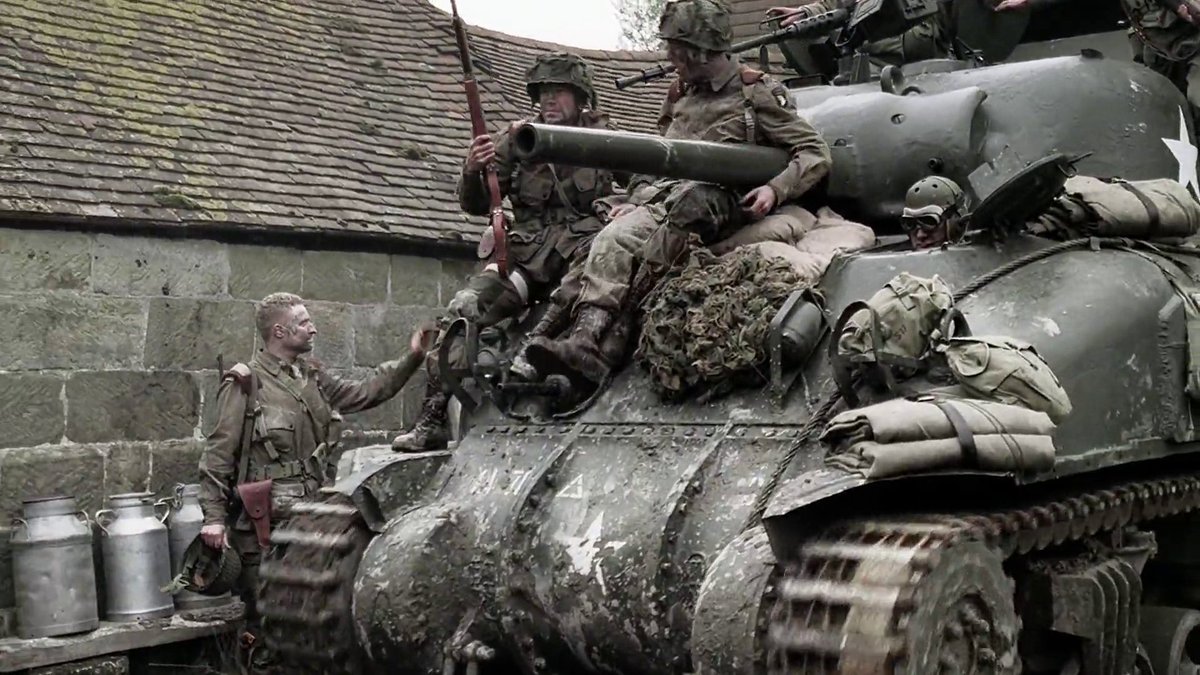 Shermans in Europe." title="The M4 Sherman tank has an almost mythical history, partly filtered through nostalgia. They were employed by the US as well as others, including the UK and the Soviet Union, and they were used in all theaters, though most of us tend to instantly imagine https://abs.twimg.com/emoji/v2/... draggable="false" alt="🇺🇸" title="Flagge der Vereinigten Staaten" aria-label="Emoji: Flagge der Vereinigten Staaten"> Shermans in Europe.">
Shermans in Europe." title="The M4 Sherman tank has an almost mythical history, partly filtered through nostalgia. They were employed by the US as well as others, including the UK and the Soviet Union, and they were used in all theaters, though most of us tend to instantly imagine https://abs.twimg.com/emoji/v2/... draggable="false" alt="🇺🇸" title="Flagge der Vereinigten Staaten" aria-label="Emoji: Flagge der Vereinigten Staaten"> Shermans in Europe.">
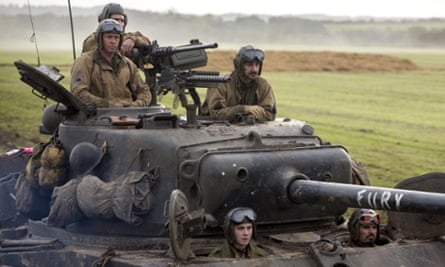 Shermans in Europe." title="The M4 Sherman tank has an almost mythical history, partly filtered through nostalgia. They were employed by the US as well as others, including the UK and the Soviet Union, and they were used in all theaters, though most of us tend to instantly imagine https://abs.twimg.com/emoji/v2/... draggable="false" alt="🇺🇸" title="Flagge der Vereinigten Staaten" aria-label="Emoji: Flagge der Vereinigten Staaten"> Shermans in Europe.">
Shermans in Europe." title="The M4 Sherman tank has an almost mythical history, partly filtered through nostalgia. They were employed by the US as well as others, including the UK and the Soviet Union, and they were used in all theaters, though most of us tend to instantly imagine https://abs.twimg.com/emoji/v2/... draggable="false" alt="🇺🇸" title="Flagge der Vereinigten Staaten" aria-label="Emoji: Flagge der Vereinigten Staaten"> Shermans in Europe.">
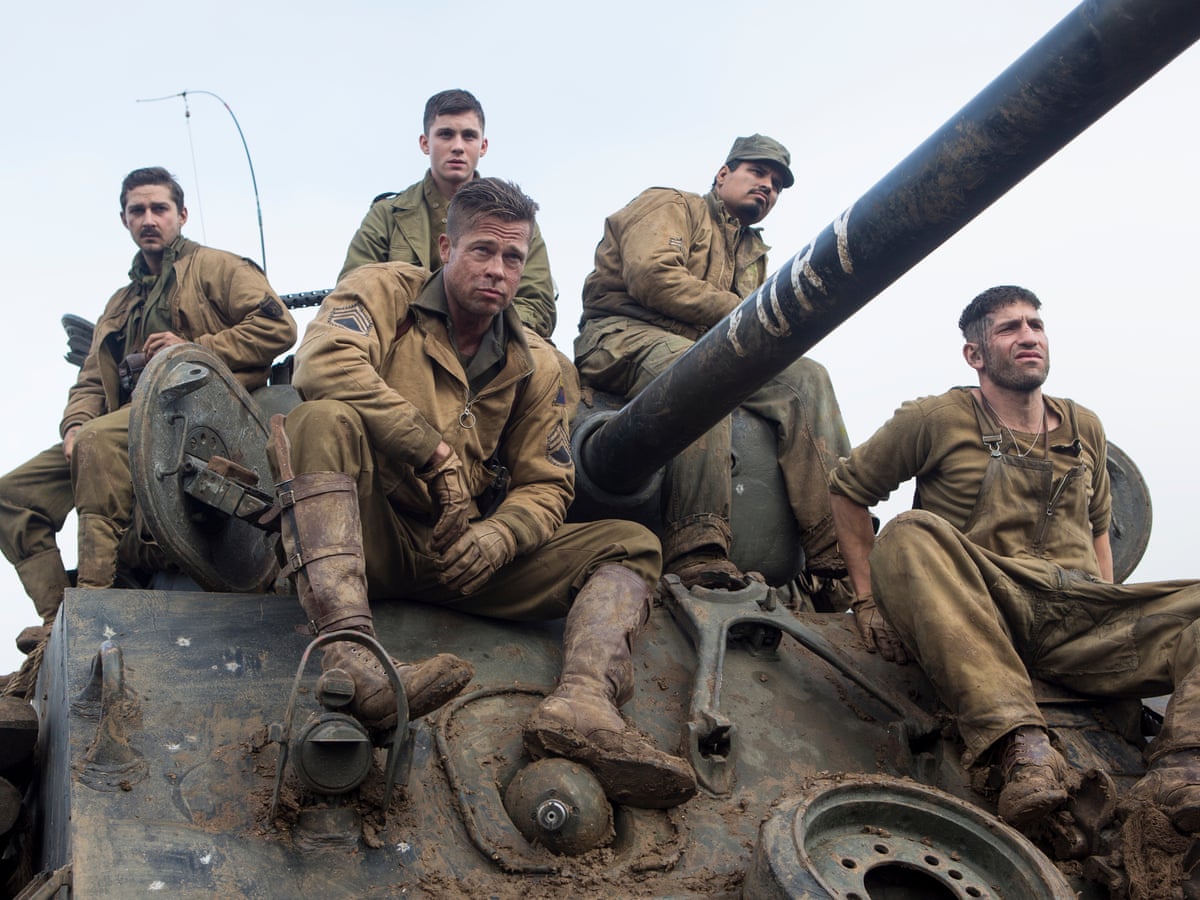 Shermans in Europe." title="The M4 Sherman tank has an almost mythical history, partly filtered through nostalgia. They were employed by the US as well as others, including the UK and the Soviet Union, and they were used in all theaters, though most of us tend to instantly imagine https://abs.twimg.com/emoji/v2/... draggable="false" alt="🇺🇸" title="Flagge der Vereinigten Staaten" aria-label="Emoji: Flagge der Vereinigten Staaten"> Shermans in Europe.">
Shermans in Europe." title="The M4 Sherman tank has an almost mythical history, partly filtered through nostalgia. They were employed by the US as well as others, including the UK and the Soviet Union, and they were used in all theaters, though most of us tend to instantly imagine https://abs.twimg.com/emoji/v2/... draggable="false" alt="🇺🇸" title="Flagge der Vereinigten Staaten" aria-label="Emoji: Flagge der Vereinigten Staaten"> Shermans in Europe.">
